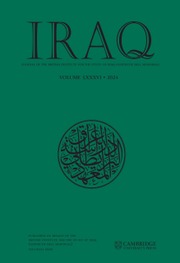IntroductionFootnote 1
In 2016, the Italian Archaeological Expedition to Nigin began to investigate the main mound (Mound A) of the site with a series of operations on the top of and along the southern slope. Three operations have been completed so far: two in Area D in 2016 and 2019 on the top of the mound on its southern and northern side, at each side of the narrow sounding made by Robert Koldewey during his brief exploration of the site in 1887,Footnote 2 and Area E on the southern slope of the mound in 2019 and 2022.
These investigations provide information on the morphology of the site’s larger mound and the layers of occupation that span the time between the late Early Dynastic I (henceforth ED) and the end of the third millennium B.C.E. While cuneiform sources of the rulers of the First and Second Dynasties of Lagash largely document the history of the entire ancient state of Lagash and record the presence of several buildings in the city of Nigin, the archaeological evidence until now has been quite limited, particularly concerning the middle of the third millennium B.C.E. and the kingdom of Gudea.Footnote 3
According to cuneiform sources and written evidence collected on the site,Footnote 4 the city of Nigin was the place of the ancient sanctuary É-Sirara, dedicated to the goddess Nanshe.Footnote 5 Inscribed cones and bricks have been recovered at the foot of the main mound, thus showing that this highest mound could correspond to the “mountain above the houses” described by Gudea when referring to his work of building and refurbishment of the temple of the goddess Nanshe.Footnote 6 In 2016, the aim of the first operation on the top of the mound in Area D was to recover archaeological evidence of the temple described by Gudea; the following operation on the north of the mound in 2019 (Area D North) aimed at complete exposure of the occupation of the topmost layer, while the operations in Area E on the southern slope aimed to verify the most ancient occupation. These excavations show how Mound A is the result of a sequence of layers during the third millennium B.C.E., from the very beginning of the Jemdet Nasr and ED I periods, as the excavations at the base of the mound have revealed.Footnote 7
This article provides new evidence of the occupation of the site in the third millennium B.C.E., starting from the multi-stratified context of Mound A (Fig. 1) and showing the different layers and associated materials in a first attempt at chrono-stratigraphy of the area.
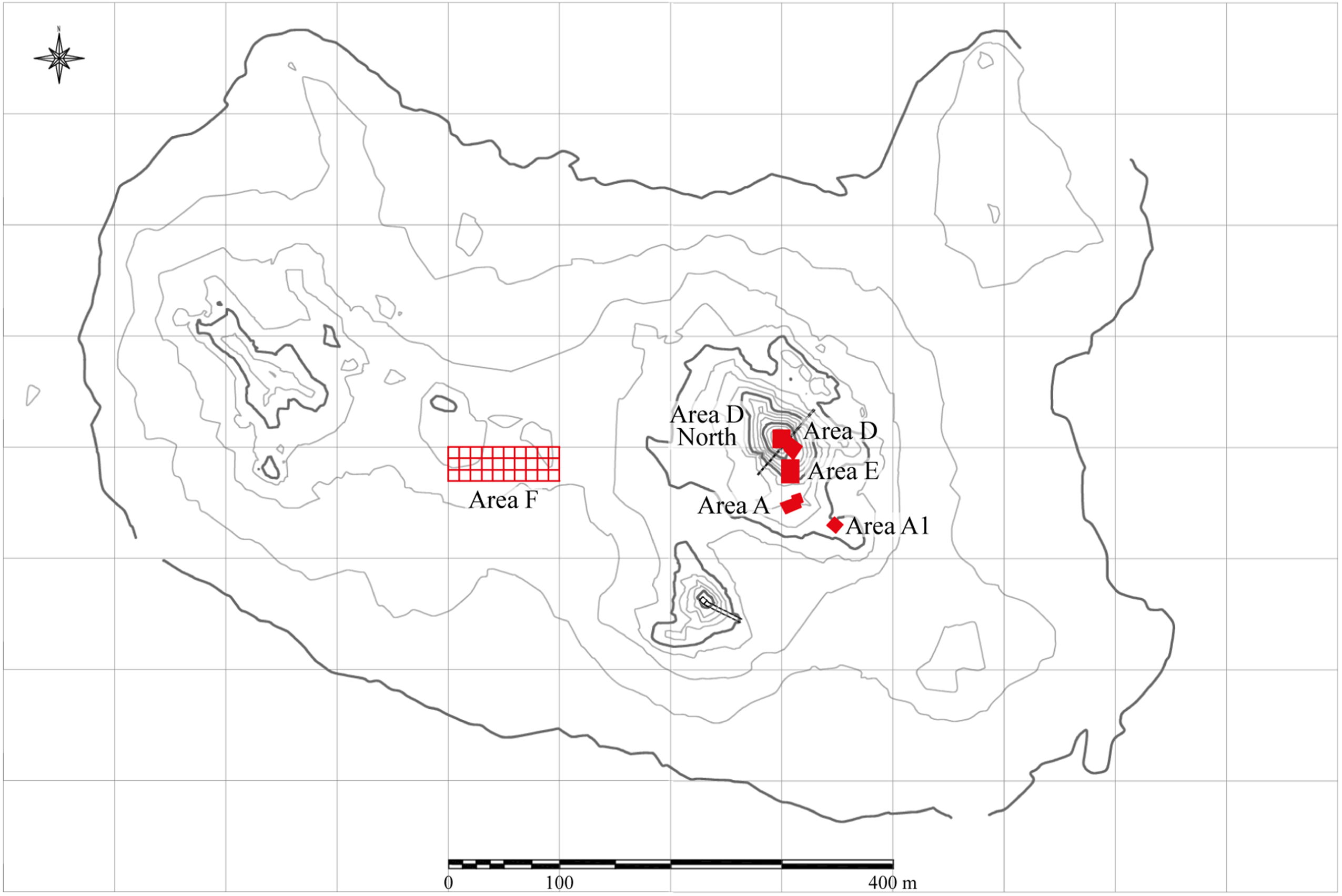
Fig. 1. Topographic map of Tell Zurghul/Nigin with Areas A, D, E and F indicated (© MAIN)
The Archaeological Context
Despite the lack of well-preserved structures, the investigation of Mound A in Areas D and E allowed the identification of three main phases of use, which have been subsequently divided into five Architectural Phases (henceforth Arch. Ph.). There was continuous layering and levelling of the earlier occupation with stratified materials in context. The upper part of the mound, outside the long, narrow trench made by Koldewey that cut the mound east–west, is highly eroded, with the result that strata are truncated along the edges and some materials have shifted to the base of the mound (including the inscribed clay cones of Gudea once belonging to the temple of Nanshe). In 2015, in operation A1 in the lower city to the south of Mound A, materials dated to the ED period have been identified in strata that accumulated as a result of the action of water streams flowing off the mound.Footnote 8 These water streams open deep gullies into lower strata and bring earlier materials to the surface, which are then transported and moved downwards.
Area D, begun in 2016, is a large trench, 11 × 10 m at the top, to the south of the edge of Koldewey’s still-visible narrow trench; Area D (North), begun in 2019, is a trench of 15 x 15 m opened on the northern side of the mound, in an area characterized by a quite wide flat surface. Area E, excavated in 2019 and 2022, is a trench of 15 × 20 m on the southern slope of the mound, below the 2016 operation in Area D.
Area D
In 2016, a trench on the upper part of the southern slope of Mound A was opened; the northern limit is defined by the southern side of the long, narrow sounding excavated by Koldewey.Footnote 9 The stratigraphy, heavily eroded along the edges because of the natural erosion of the mound, is quite simple, without any complex later structures that obliterated or cut the last phase of occupation of the mound. Although the material found is relatively scanty, the archaeological context confirms that the uppermost layer of the mound can be dated to the final part of the third millennium B.C.E., in the time of the kingdom of Gudea.
In particular, immediately below the surface, a massive terracing of mud (W.155) was identified; it consists of compacted and compressed blocks of mud that create a homogenous and solid construction. This construction had a structural function, probably related to the foundation of the sacred building of Nanshe that was originally planned for the top of the mound. Furthermore, this regular adobe block stands directly on a well-preserved plastered floor (L.151+L.152; Arch. Ph. I), heavily eroded to the south and east (Fig. 2a-b).
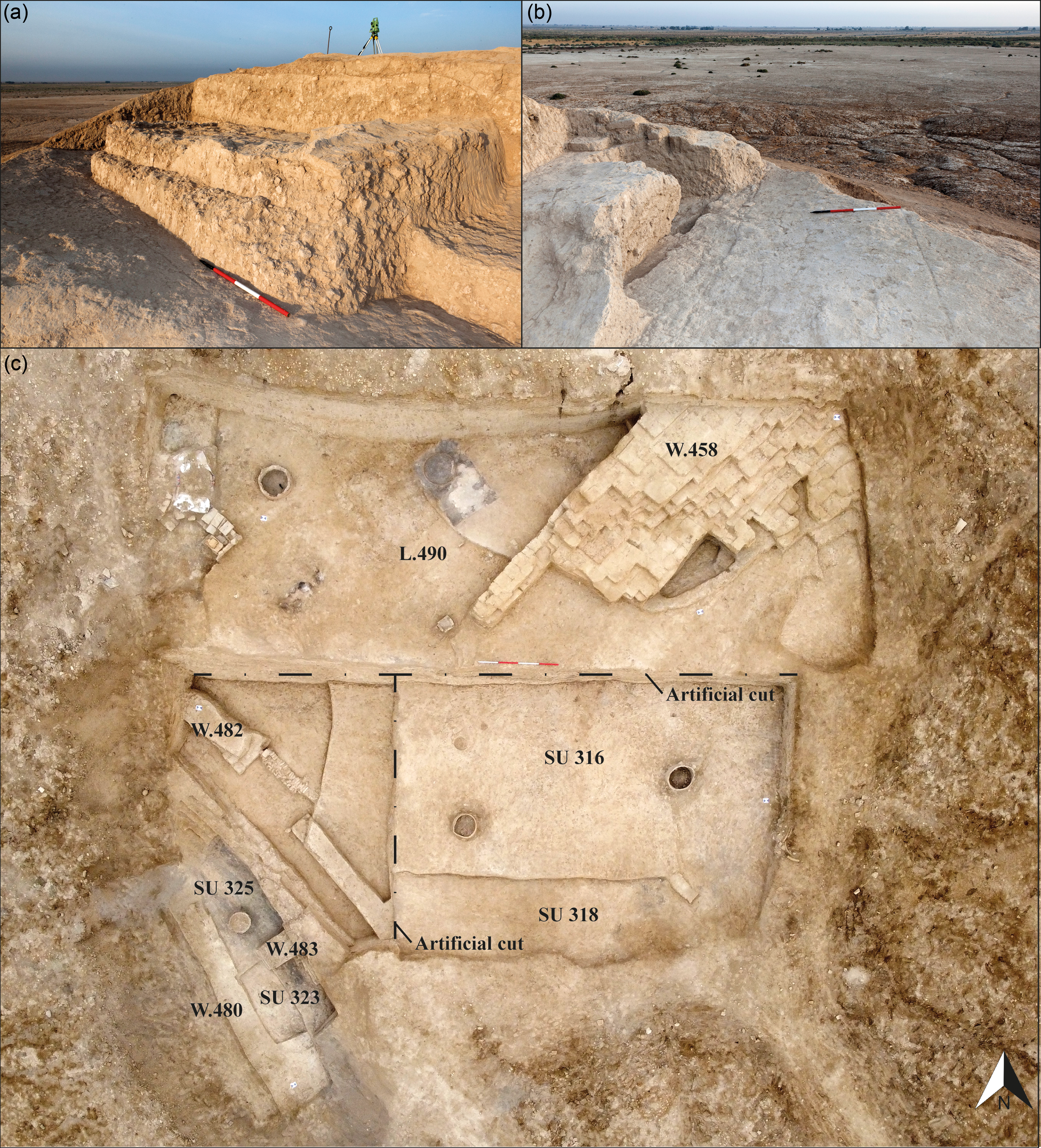
Fig. 2. a–b) Platform L.151-152 (Arch. Ph. I); c) Drone picture of Area E in 2022 (© MAIN)
The investigation of the strata underneath the plastered floor (L.151+L.152) confirmed the stratigraphy and the construction technique of the mound; although it was badly preserved because of the high degree of erosion, it has been possible to identify a second terracing of mud lying on a platform (L.162; Arch. Ph. II). Therefore, Area D on the southern side of the mound showed the anthropogenic nature of the strata formation, with continuous operations of terracing above flat platforms that were necessary to support the construction of the temple dedicated to Nanshe on the top.Footnote 10
In 2019, a second operation in Area D was opened to the north of the northern edge of Koldewey’s sounding. Observation of this sector of the mound revealed a quite large flat surface which was less eroded than the southern side. Based on the results of the 2016 excavation on the southern side, the large, flat surface to the north seemed to represent a quite well-preserved platform that could be linked to the plastered floor to the south. With this in mind, the northern front of the mound was chosen, in order to complete our comprehension of the morphology of the mound, beyond the cut of the Koldewey’s trench. At the same time, given the particularly wide flat surface and the minor degree of erosion, it was plausible to assume the existence of some architectural evidence of the remains of the temple dedicated to Nanshe.
Indeed, the stratigraphy of the northern side of the mound is simple: ten deposits have been identified, one covering the other in a quite-perfect horizontal superimposition of strata. In particular, once the surface accumulation (SU 1550) was excavated, two single deposits were identified: SU 1551 and SU 1553 (the former covering the latter; assigned to Arch. Ph. I). These are both compact strata of clay with a high density of pottery fragments (in particular, conical bowls), medium and large size charcoal and bitumen fragments, and ashy soil.
In contrast to the southern side, the operation to the north did not reveal any architectural features which could be interpreted as phases of construction and sequences of buildings. The nature of the soil (thick compact layers of clay) and the horizontal superimposition of the strata (SSUU 1552, 1554–1559; Arch. Ph. II) corresponded to the intention of creating a solid foundation for a building, presumably the É-Sirara of Nanshe. Although speculative, the temple was probably built on the upper part of the mound slightly to the south, where the plastered platform has been detected; this would also explain why the majority of the inscribed clay cones and stamped bricks with inscriptions of Gudea have been found scattered on the surface at the foot of the mound to the south, as the result of the collapse of the original structure and the consequent moving of the materials downward.
Area E
Area E, a 15 x 20 m trench, is located on the south-western slope of Mound A. The operations of the 2019 and 2022 seasons aimed to detect the occupational nature and sequence of the mound (Fig. 2c), investigating its morphology in connection with the northernmost Area D (excavated in 2016 and 2019) and the southernmost Area A at the base of the mound (excavated in 2015, 2016, and 2017).Footnote 11
Two main phases have been recognized in the northern portion of the excavated area: a horizontal cut running from east to west for the total length of the trench, clearly visible in the northern section of the operation, separates the upper from the lower phase. The upper phase has no related architectural features, but material from the filling layer lying above the horizontal cut returned a good assemblage of late third millennium B.C.E. materials (SU 202). This upper phase has been included within Arch. Ph. II.
Underneath the horizontal cut, the second phase (Arch. Ph. III) is characterized by an imposing north-east/south-west mud-brick wall (W.458; 6 m long x 4 m wide) in the eastern part of the trench. W.458 is associated with an area (L.465) characterized by the presence of a circular kiln (I.461), 0.8 m in diameter, and several hearths. From this area, many fish and animal bones, mat impressions, medium-sized storage jars, and bowls could point to the use of the area as an open space for the preparation and distribution of food rations. The excavation in 2022 led to further exposure of the large open area (apparently a square or large courtyard) in connection with wall W.458, with three additional walls on the eastern side, W.487, W.488 and W.489, extending further to the east. A preceding floor level (L.490) was identified immediately below L.465 and therefore constituted the first level of a repeatedly raised floor in association with W.458.Footnote 12 The large area contains several installations for working activities, such as two ovens (tannur), one rectangular fireplace made of bricks, and a brick structure for the drainage of water towards the drain in the north-western corner of the trench. Not only the structure but also the pottery found in situ lying on the beaten-earth floor of the area point to the interpretation of the entire space as a place where goods were produced and temporarily stored before being redistributed or used in nearby places, such as the temple area of the É-Sirara of Nanshe. A fragment of an ED cylinder seal with a banquet scene and a clay figure representing a goose, sacred animal of the goddess of Nigin, have been found (Fig. 3a-b).
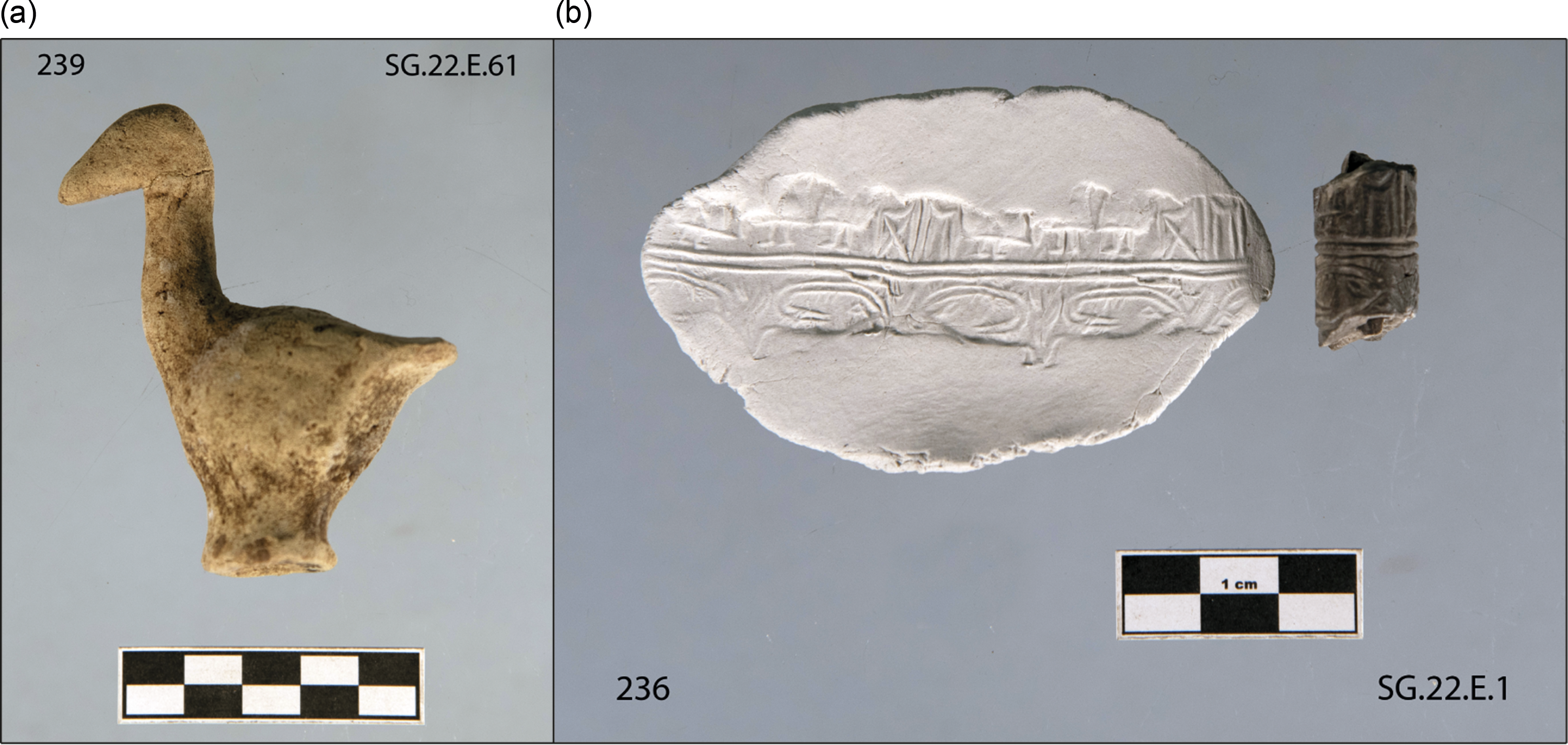
Fig. 3. a) Clay figurine of a goose (SG.22.E.61), sacred animal of the goddess Nanshe; b) Early Dynastic cylinder seal and modern impression (SG.22.E.1) (© MAIN)
The second step of the trench, only very partially excavated in 2019, was extensively investigated in 2022. The sequence of strata and the collection of pottery material culture – together with charcoal samples selected for C14 analysesFootnote 13 – point to an older occupation of the area, in the third millennium B.C.E., covering the early Akkadian/ED IIIB and, possibly, the ED III B–A. In particular, the excavation led to the understanding of the system of construction and occupation of the mound, with the continuous remaking of floors and mudbricks, which were reused, reinforced, and rebuilt by adding new rows of bricks separated by strata of mud, or even of clay and ashy soil. The second step of the trench is characterized by the presence of several drains for the collection, regulation, and discharge of water (six drain systems were detected; assigned to Arch. Ph. IV); it is interesting to observe that the area seems to be specifically built and used as a system for regulation of water used in connection with activities carried out nearby. Because of the erosion caused by heavy rain, a sounding in the south-western corner of the trench led to the identification of a structure of two rooms and two mudbrick walls (W.480 and W.486; Arch. Ph. V) which further extend to the south and west (Fig. 4). The pottery collected in this sounding belongs to an early phase of the ED period (late ED I/ED I–ED III A transition), showing that the mound had a long occupation in the third millennium B.C.E. This datum is interesting if one compares the evidence from Area A at the southern foot of the mound, which was occupied from the Late Uruk to the early ED I.Footnote 14

Fig. 4. Reconstructed section of Mound A with indication of main stratigraphic units (SU) and loci (L.) (Elaboration by Luca Volpi)
The Third Millennium B.C.E. Pottery Repertoire from Mound A, Tell Zurghul/Nigin
Pottery Analysis: An Introduction
The chrono-morphological analysis of the pottery repertoire is fundamental for contextualizing the materials recovered in the 2016, 2019, and 2022 excavations in Areas D and E at Tell Zurghul/Nigin within the panorama of discoveries in southern Mesopotamia. From an historical perspective, the third millennium B.C.E. is well-known through many textual sources, which provide information on the political and economic dynamics, giving an insight into the ruling dynasties and the practices first set up by temple infrastructures and then by palatial ones. This is in contrast to the archaeological perspective, where careful extensive excavations are needed to provide sound insights into the lives of the people at the time.
In pottery studies, the lack of reliable archaeological data is exacerbated by a questionable methodology used in some past excavations and publications. The value of pottery as a dating element was only partially considered, and the cataloguing and publication of pottery repertoires were frequently limited to whole vessels. In addition, materials were often published according to a morphological division based on typological families (or groups) and not on types (e.g., at Tell al-Muqayyar/Ur; typological families can be considered as clusters of types grouped together by common morphological features)Footnote 15 . All this has been to the detriment of a sound ceramic-based periodization, and therefore the definition of a ceramic sequence for the third millennium B.C.E. is still an open question.
With some earlier exceptions,Footnote 16 a reversal of the trend has occurred with the analysis conducted by A. McMahon for the pottery of Area WF at Nuffar/Nippur.Footnote 17 Increasingly, recent publications (of both old and new excavations) have embarked on a new path of publishing as many ceramic fragments and repertoires as possible, with the aim of providing the greatest amount of material for large-scale, regional periodization.Footnote 18 Some studies have recently provided an updated ceramic periodization particularly for the second half of the third millennium B.C.E. M. Zingarello, for the mid-third millennium B.C.E.,Footnote 19 and E. Casadei, for the transition between the third and the second millennia B.C.E.,Footnote 20 have addressed the issue with re-analysis of all the excavated contexts, selected according to their nature, the quality of data, and the availability of published pottery materials. Their approach is based on the use of a cross-occurrence (type-context) seriation table, a statistical-combinatory method that aims to identify a series of recurring types found in association with different archaeological contexts.Footnote 21 As described by A. Vacca, “these associations generate the relative chronological series, that is, series of archaeological contexts placed in a chronological sequence on the basis of their degree of similarity”.Footnote 22 The result of these studies is the identification of several ceramic phases that run in parallel and do not exactly correspond to the historical periodization. In Southern Mesopotamian studies, there is a tendency to use historical labels (ED, Akkadian, Post-Akkadian, Ur III, Isin-Larsa periods) to refer to the chronology of the third millennium B.C.E. Nevertheless, this is a relative periodization derived from the analysis of textual sources, and it cannot be employed with reference to other classes of material.Footnote 23
The identified ceramic phases partially overlap with historical periods. By associating these phases with the third millennium B.C.E. Tell Zurghul repertoire from Mound A, five Pottery Phases can be identified so far (A–E; Tab. 1). Phase E is the earliest so far recognized in the sequence of the mound (Areas D and E), and it presents some traits that are distinctive of the first half of the third millennium B.C.E. (late ED I/ED I–ED III A transition).Footnote 24 Phase D is characterized by clear ED pottery traits. Zingarello assigns this phase to the ED IIIA historical period.Footnote 25 Phase C is characterized by distinctive ceramic features of the late ED III/early Akkadian period. Phase B is characterized by ceramic types attested in the historical period between the Late Akkadian, Post-Akkadian, and the first kings of the Third Dynasty of Ur. Phase A is distinguished by specific traits that can be assigned to the second part of the Ur III kingdom and to the first centuries of the Isin-Larsa period; for the moment, the Tell Zurghul repertoire does not cover this phase (Tab. 1).Footnote 26
Table 1: Pottery Phases of the third millennium B.C.E. identified in the Tell Zurghul/Nigin repertoire of Areas D and E

In this situation, the evaluation of the pottery contexts from Tell Zurghul/Nigin for the third millennium B.C.E. aims to establish dating for the materials recovered in the excavations of Areas D and E, and, at the same time, to provide additional materials useful for a general reassessment of the ceramic chronology of third millennium B.C.E. Mesopotamia.
Methodology, Counting, and Selection
The present work is based on data gathered during the excavations. The cataloguing, description, and selection of the diagnostic repertoire were carried out on site by area supervisors.Footnote 27 Significant numbers of ceramic materials were collected: more than 12,000 bulk body sherds; c. 3800 diagnostic vessels and sherds (mostly rims and bases), c. 2400 of which have adequate graphic documentation (drawings and photos); c. 720 pieces were selected from the drawings for the present morphological analysis (Fig. 5a-b).Footnote 28
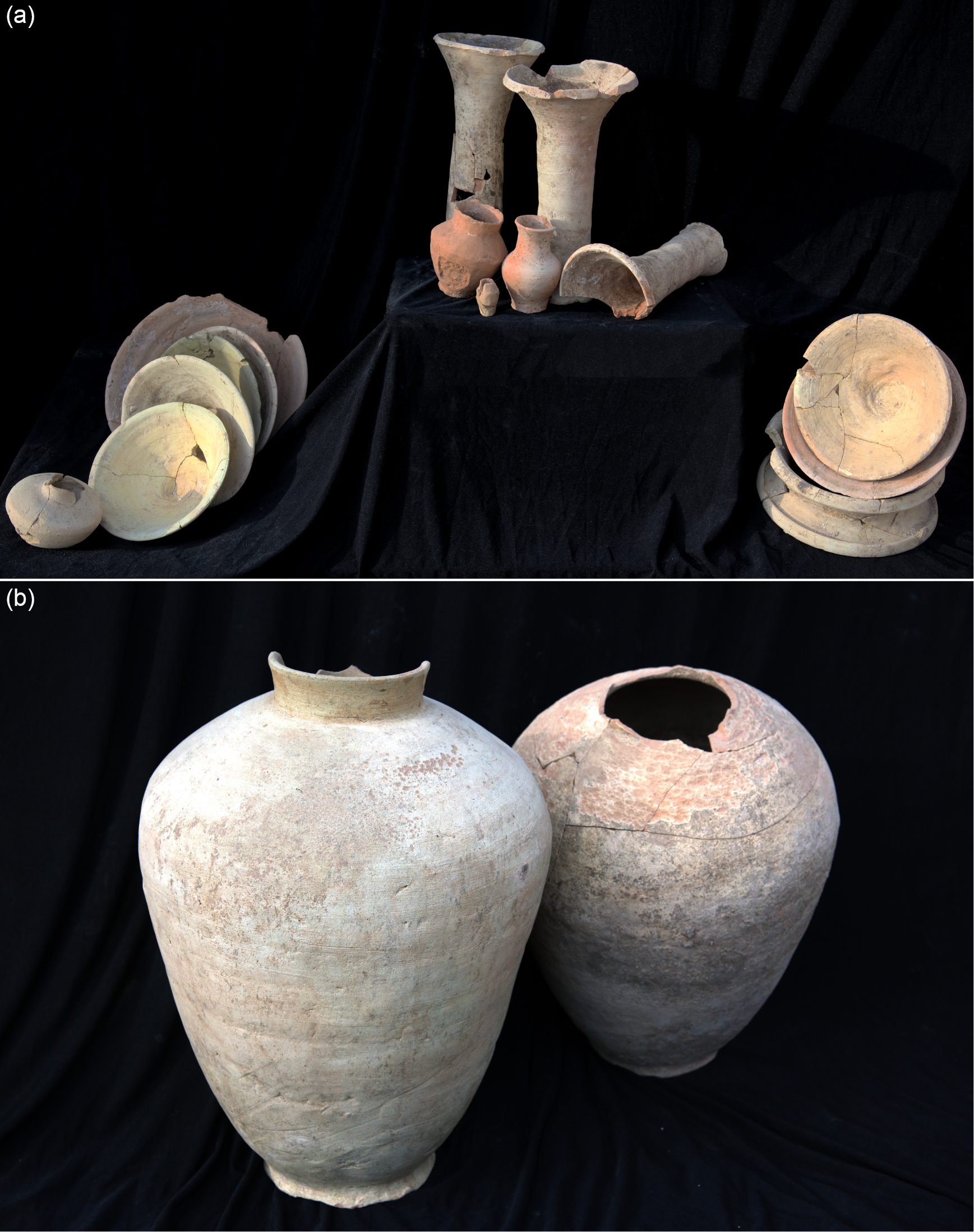
Fig. 5. a) Selected pots from L.490; b) Jars from SU 318 (© MAIN)
Vessel morphology has been analysed through examination of the shape in its entirety; individual variations of specific portions of the vessel have been considered only within the same form. At present, no in-depth study of the technological aspects (nature of clay and inclusions, primary forming, secondary refining processes, etc.) of the repertoire has been carried out. Their discussion is outside of the scope of this paper and will be the subject of future endeavours. Specimens are divided into open and closed forms. For this preliminary assessment, the majority of materials comes from secure stratigraphic units (SU): this choice mainly concerns Arch. Ph. III–V, where occupational activities have been identified. Conversely, some materials of Arch. Ph. I–II come from foundation deposits which, although they could be misleading for stratigraphic evaluation, have been in any case selected since they are coherent with the late third millennium B.C.E. materials from secure stratigraphic units on the platforms of Arch. Ph. I–II. On the slope of the mound, most of the superficial layers are characterized by mixed deposits of archaeological materials; accumulations from upper layers and erosion caused by quite deep gullies are the two most frequent phenomena, resulting in the mixing of archaeological materials. For these reasons, all the archaeological layers that may have been affected by these phenomena and may contain materials that are not perfectly in sequence have been excluded from the analysis.
Reference Sites and Contexts
An examination of the main contexts used for comparison is needed. An important point to note is that only pottery findings from stratigraphic excavations were examined, and materials from surface collections were mostly excluded. The chronological periodization here mentioned is the result of a re-evaluation based on both the chronology proposed by authors who published the sites’ stratigraphy and materials, and recent reassessment works.Footnote 29 A synchronization of levels from the various sites is shown in Table 2a.Footnote 30
Table 2: Synchronisation table with indication of the main third millennium B.C.E. archaeological sequences of Central and Southern Mesopotamia. a) Sites covering the entire span of the third millennium B.C.E.; b) sites covering a limited period within the third millennium B.C.E. Each colour or shade identifies a particular Pottery Phase based on Table 1
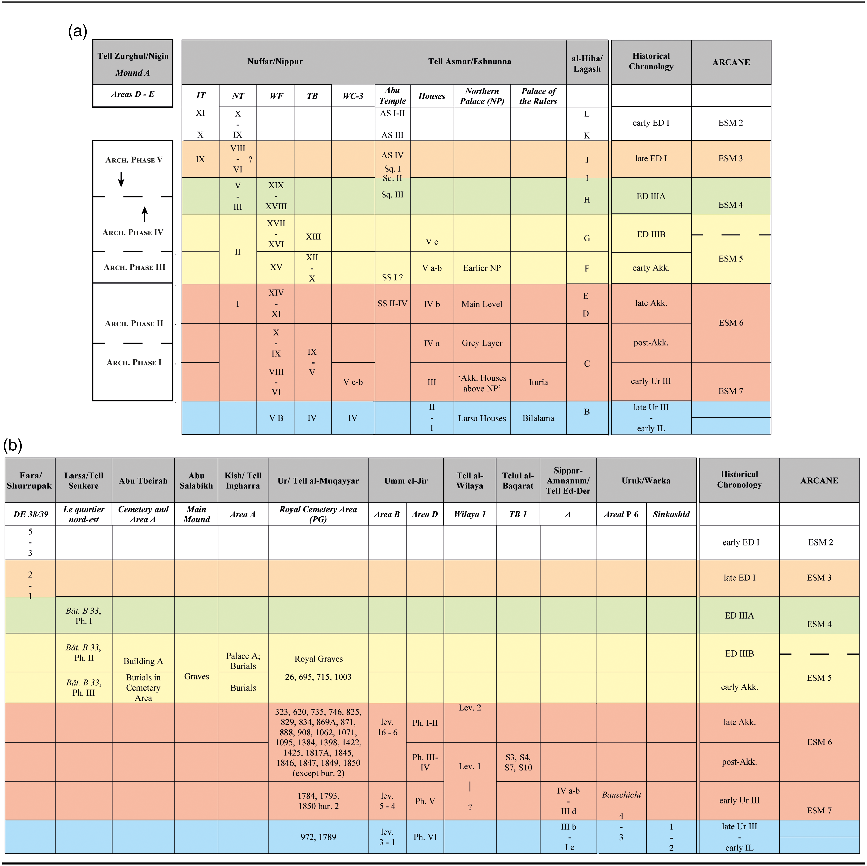
As already mentioned, Nuffar/Nippur is one of the key sites for analysis of the pottery repertoire of third millennium B.C.E. Mesopotamia. The Inanna Temple (IT)Footnote 31 offers a long occupational sequence for the entire millennium, but the final report of the excavation has not yet been published.Footnote 32 For the present analysis, only data from the beginning of the third millennium B.C.E. (levels XI-IX) have been considered.Footnote 33 The Northern Temple (Area NT) is a small religious building with a long occupational sequence covering the entire first half of the third millennium B.C.E., from the beginning to the late Akkadian period (levels X-I).Footnote 34 The site is also relevant for a re-evaluation of the mid- and second half of the third millennium B.C.E. due to its accurate stratigraphic sequences, especially in Areas WF and TB.Footnote 35 In Area WF, an unbroken sequence of levels (XIX-VI) with a domestic function, dated from the ED IIIA to the late Ur III/Isin-Larsa was uncovered.Footnote 36 Area TB, in the so-called ‘Scribal Quarter’, presents a similar uninterrupted sequence of domestic buildings (levels XIII-I) dated from the Akkadian to the Isin-Larsa period.Footnote 37 The occurrence of accurate chronological markers (i.e., inscribed materials) within some levels has allowed precise dating of the buildings.Footnote 38
Tell Asmar/Eshnunna is another key site for the chronology of Central and Southern Mesopotamia. The Abu Temple is a religious building with several Architectural Phases spanning three quarters of the third millennium B.C.E. (Archaic Shrine, Square Temple, and Single-Shrine assigned respectively to the ED I, ED III, and Akkadian periods). The area of the Northern Quarter (Houses) presents a long sequence of domestic structures dated from the late ED (level V) to the Ur III period (level III).Footnote 39 The same can be said for the so-called ‘Northern Palace’ area, where two main building phases (an ‘Earlier Northern Palace’ and its ‘Main Level’) were recognized and assigned respectively to the early Akkadian and late Akkadian periods. The Palace was covered by the ‘Grey Layer’, on which the so-called ‘Akkadian Houses’, actually dated to the Ur III period, were built.Footnote 40 The site also presents important evidence dated to late Ur III and early Isin-Larsa periods. According to the reconstruction by Reichel,Footnote 41 the Ur III governor’s palace (the so-called ‘Palace of the Rulers’) was built by the ruler Ur-gu’edinna at the time of the second king of the Third Dynasty of Ur, Shulgi. The palace was built before the Shu-Sin Temple, the latter constructed by the ruler Ituria. After the fall of the Ur III Dynasty, at the very beginning of the second millennium B.C.E., the palace underwent substantial changes at the time of King Bilalama.
The recent publication of the ceramic materials from 1968–1990 expeditions at Tell al-Hiba/Lagash (Renette Reference Renette2021) makes the site one of the most important reference points for the region. Four excavation areas were investigated. The beginning of the Early Dynastic period is well represented in Area G; ED IIIA was only excavated in Area A; the ED-Akkadian transition is represented in all three areas, while the final quarter of the third millennium B.C.E. is attested only in Area B.Footnote 42
The data from these key sequences of Nippur, Tell Asmar, and al-Hiba have been supplemented from time to time with those from completed or ongoing excavations. They are described hereafter; the sites are mentioned from the oldest to the most recent (the same order is also used for Table 2b).
Fara/Shurrupak is an important site especially for the beginning of the third millennium B.C.E. Stratigraphic materials in sequence are found in DE 38/39, a c. 6.75 m deep cut with a mainly ED I occupation (levels 5–1).Footnote 43
Assigned to the late ED period, Bâtiment B 33 at Tell Senkere/Larsa is a large domestic building interpreted by the excavators “comme une vaste résidence à caractère aristocratique”.Footnote 44 The residence presents three architectural phases, numbered from I to III: phases I and II are interpreted as the construction phase and the main-use phase, respectively; phase III is considered to be a later rebuilding usage before the final abandonment of the structure. As for the dating, phase I is assigned to the ED IIIA period, phases II and III to the ED IIIB-Akkadian transition.Footnote 45
At Abu Salabikh, two areas (Area A and E) in the Main Mound of the site have revealed a large number of burials mostly dated to the late ED period.Footnote 46 Although they have been found immediately under the surface, some of the graves in Area E can be arranged in an internal stratigraphic order.Footnote 47
At Abu Tbeirah, the excavations in Area 1 have revealed an ‘L’ shaped structure of a probable domestic-household function.Footnote 48 Two architectural phases without a noticeable change in plan were revealed, succeeded by a later burial phase. Although “the chronological distance between the last phase of Building A and the latest graves and activities cannot be at present specified”, the pottery horizon is assigned to the ED III/early Akkadian period.Footnote 49
The most relevant sites attributed to the Late Akkadian/post-Akkadian and early Ur III period are Tulul al-Baqarat, Tell al-Muqayyar/Ur, and Tell ed-Der/Sippar-Amnanum. Tulul al-Baqarat is a multi-mound site. Particularly in the TB 1 mound, a series of soundings in its southern portion (S3, S4, S7, and S10) have revealed some occupational phases attributed to the late Akkadian and early Ur III periods.Footnote 50
Tell al-Muqayyar/Ur is one of the most important sites in southern Mesopotamia. Among the almost two thousand graves excavated in the ‘Royal Cemetery’ area (most of them dated to the ED period, with the so-called ‘Royal Graves’ dated to the ED IIIB),Footnote 51 some of the graves can be assigned to the Late Akkadian/post-Akkadian and early Ur III period, based on a re-evaluation of archival data.Footnote 52 Since 2015, new excavations have been conducted at Ur, dealing in particular with domestic areas in the southern part of the site. These houses are mainly Old Babylonian in date, but at the bottom of the soundings some very late third-early second millennium B.C.E. levels have been reached.Footnote 53
An area of domestic buildings has been investigated at Tell ed-Der/Sippar-Amnanum. In sounding A, three architectural building phases (‘Ensembles’ IV-II, with further sub-phases) have been recovered, dating from the end of the Ur III period to the first century of the second millennium B.C.E.Footnote 54 Sub-phases IVb and IIId have been assigned to the Ur III period, sub-phase IIIb and ‘Ensemble’ II to the late Ur III and early Isin-Larsa periods.Footnote 55
In addition, for the late Ur III and early Isin-Larsa period it is also important to mention the site of Warka/Uruk, in particular the materials from the lowest levels in the Sinkašid-Palace Area (levels 1-2),Footnote 56 and the building levels in Areal P 6 (Bauschicht 4-3).Footnote 57 Other important sites, e.g., Umm el-Jir, Tell Ingharra/Kish, and Tell al-Wilaya, are not thoroughly described here, while they have been considered for ceramic comparisons.
Morphological description and analysis
Through stratigraphic analysis, five Architectural Phases (Arch. Ph. I-V) have been identified at Nigin; the pottery morphology is described following the stratigraphic reconstruction. Only the most distinctive pottery types are thoroughly described; a selection of the rest of the repertoire is shown in Figs. 6–23. Although some of them have comparisons with vessels and sherds found over multiple levels and belonging to more than one ceramic phase (e.g., in the Nippur WF and TB sequences), their presence in specific Architectural Phases at Tell Zurghul/Nigin, as well as their association with more datable sherds, make them relevant for the present discussion. The pottery repertoire is clearly distinguished into three groups:
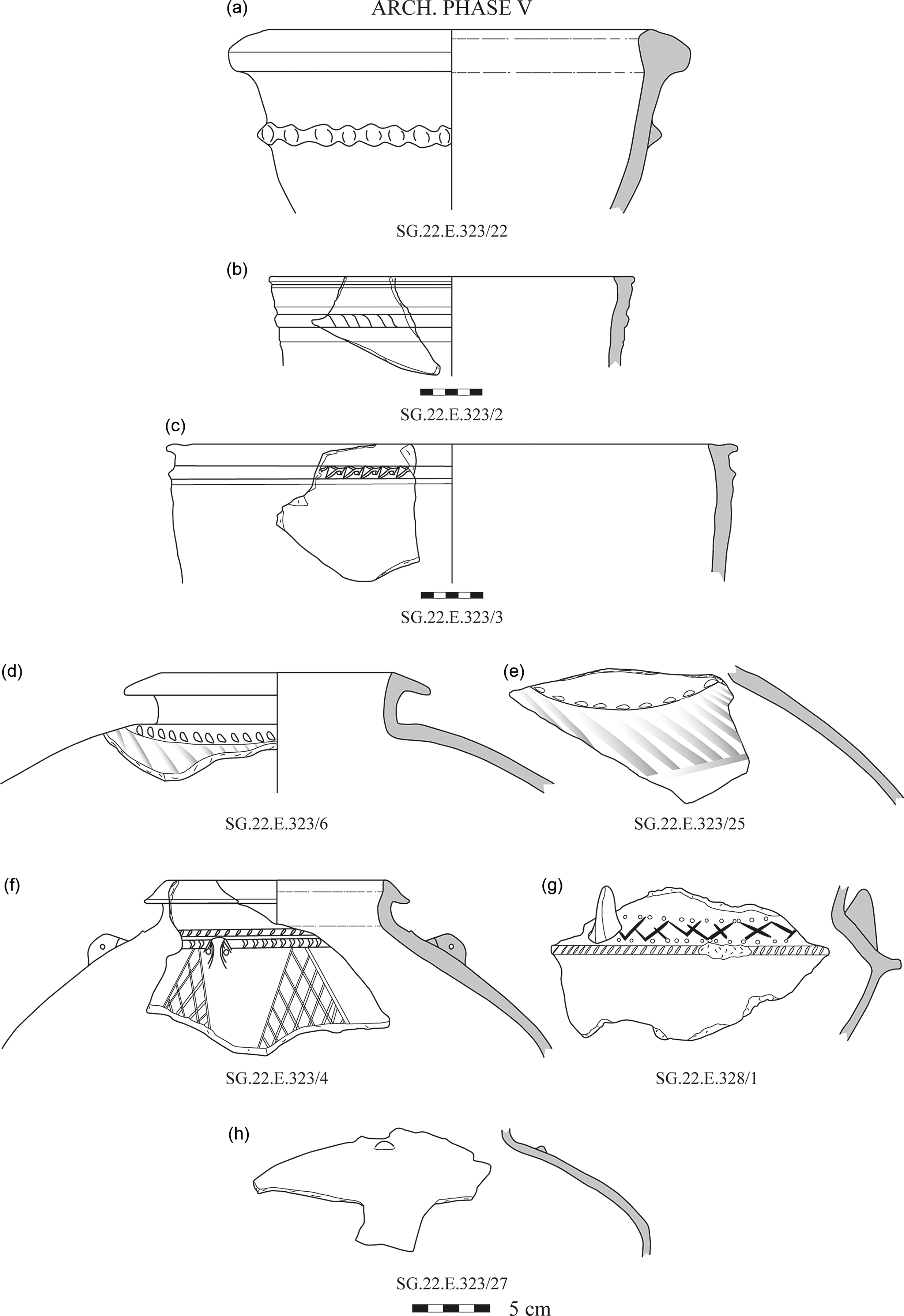
Fig. 6. Distinctive pottery from Arch. Ph. V (© MAIN)
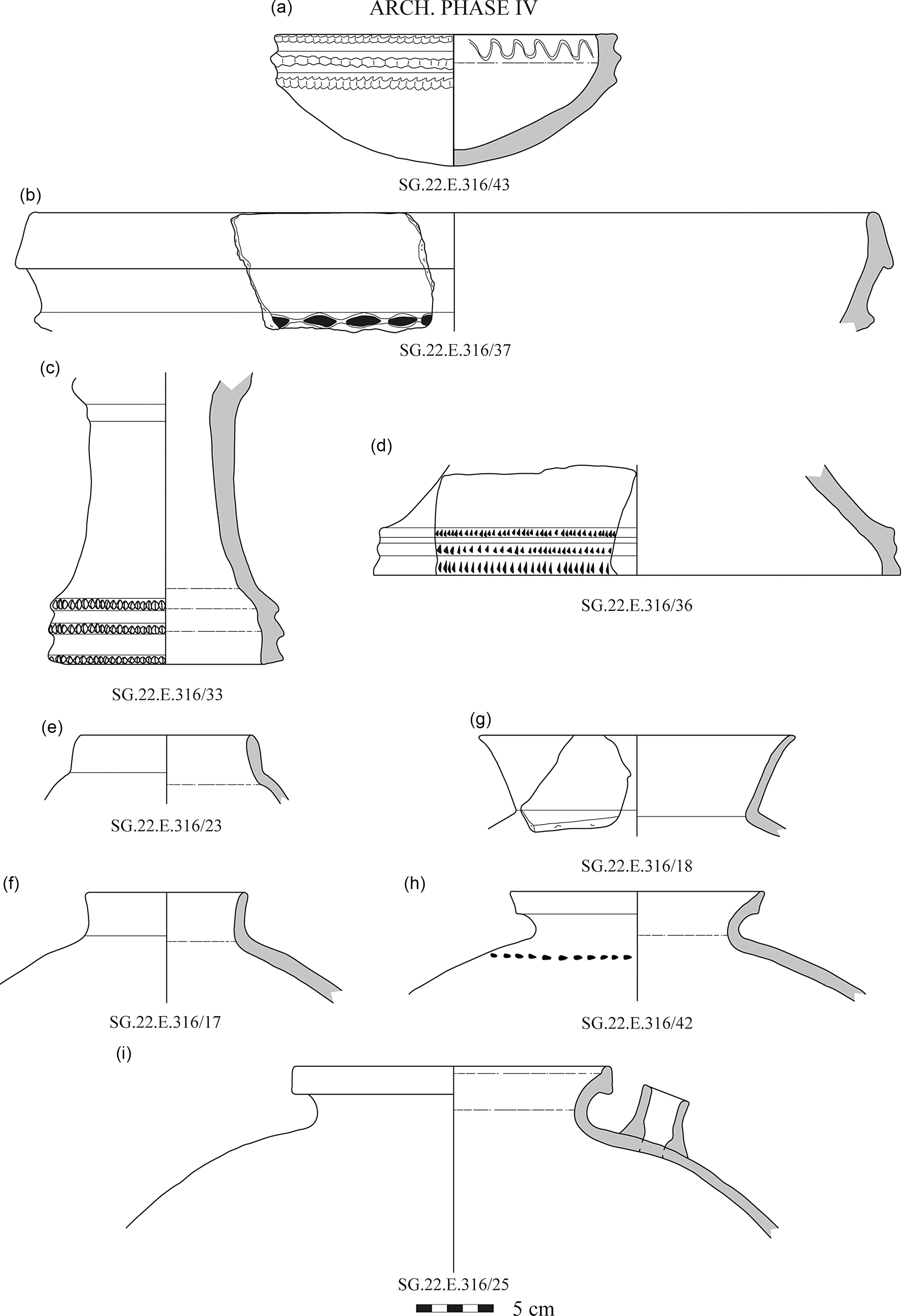
Fig. 7. Distinctive pottery from Arch. Ph. IV (© MAIN)
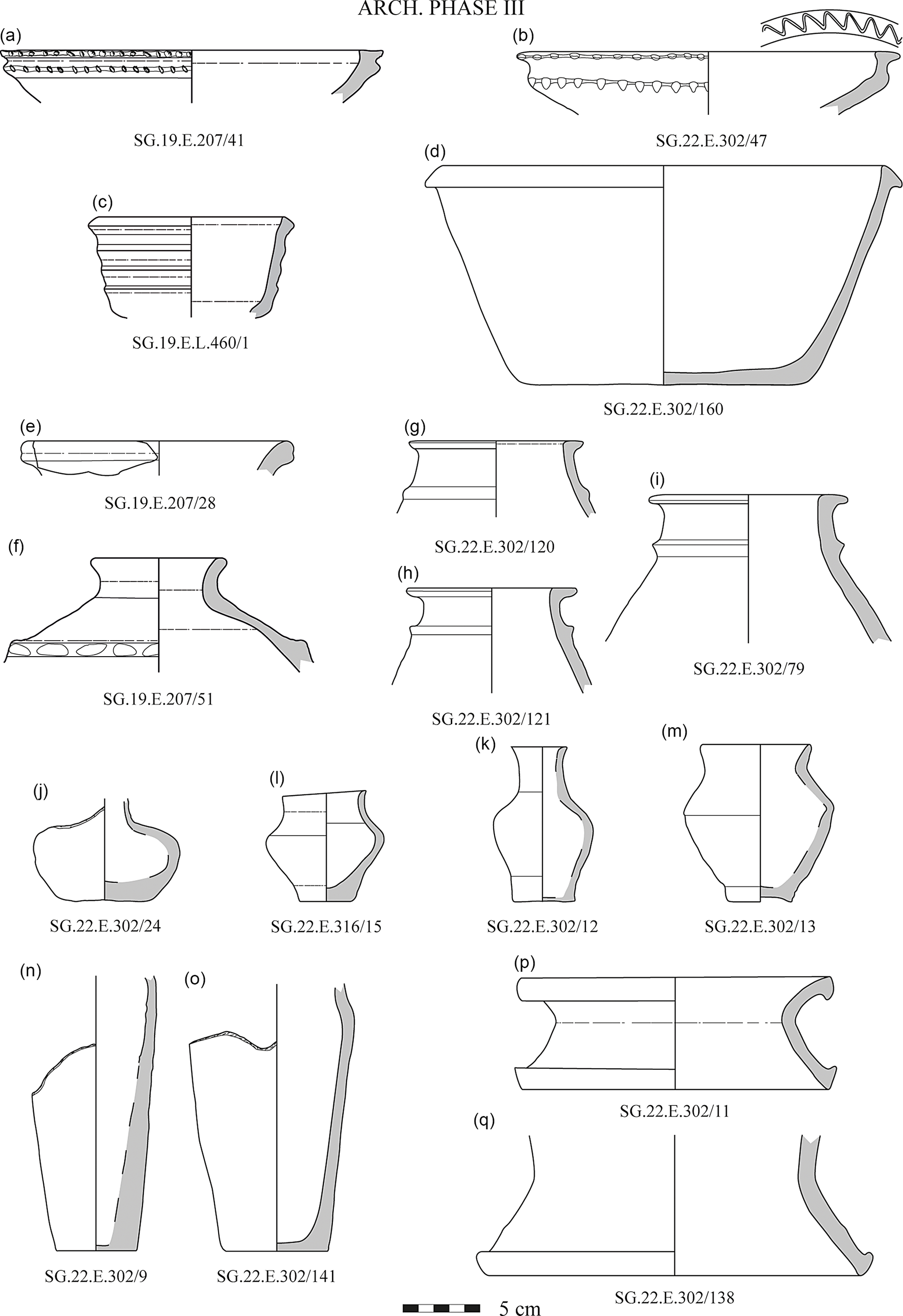
Fig. 8. Distinctive pottery from Arch. Ph. III (© MAIN)
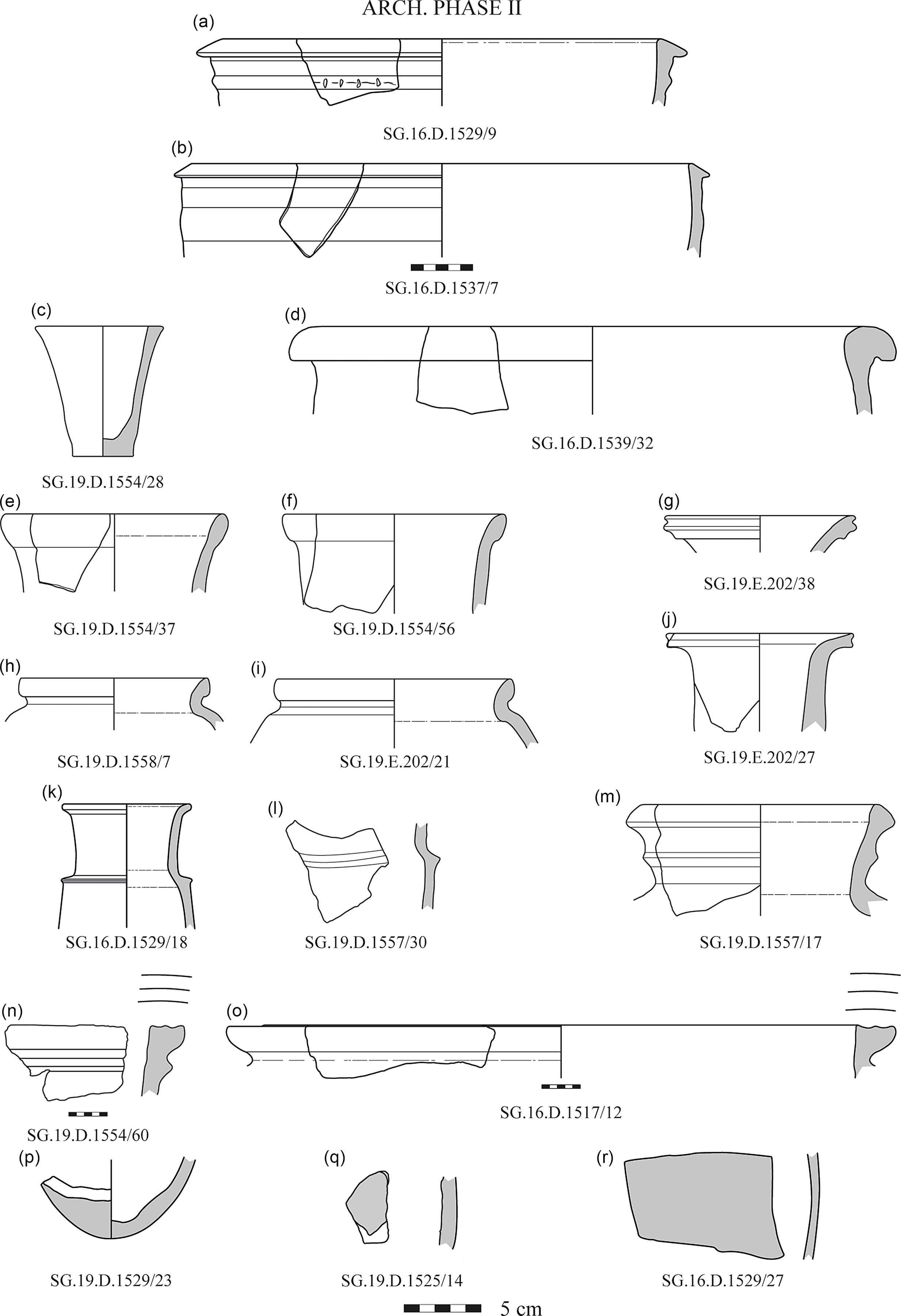
Fig. 9. Distinctive pottery from Arch. Ph. II (© MAIN)
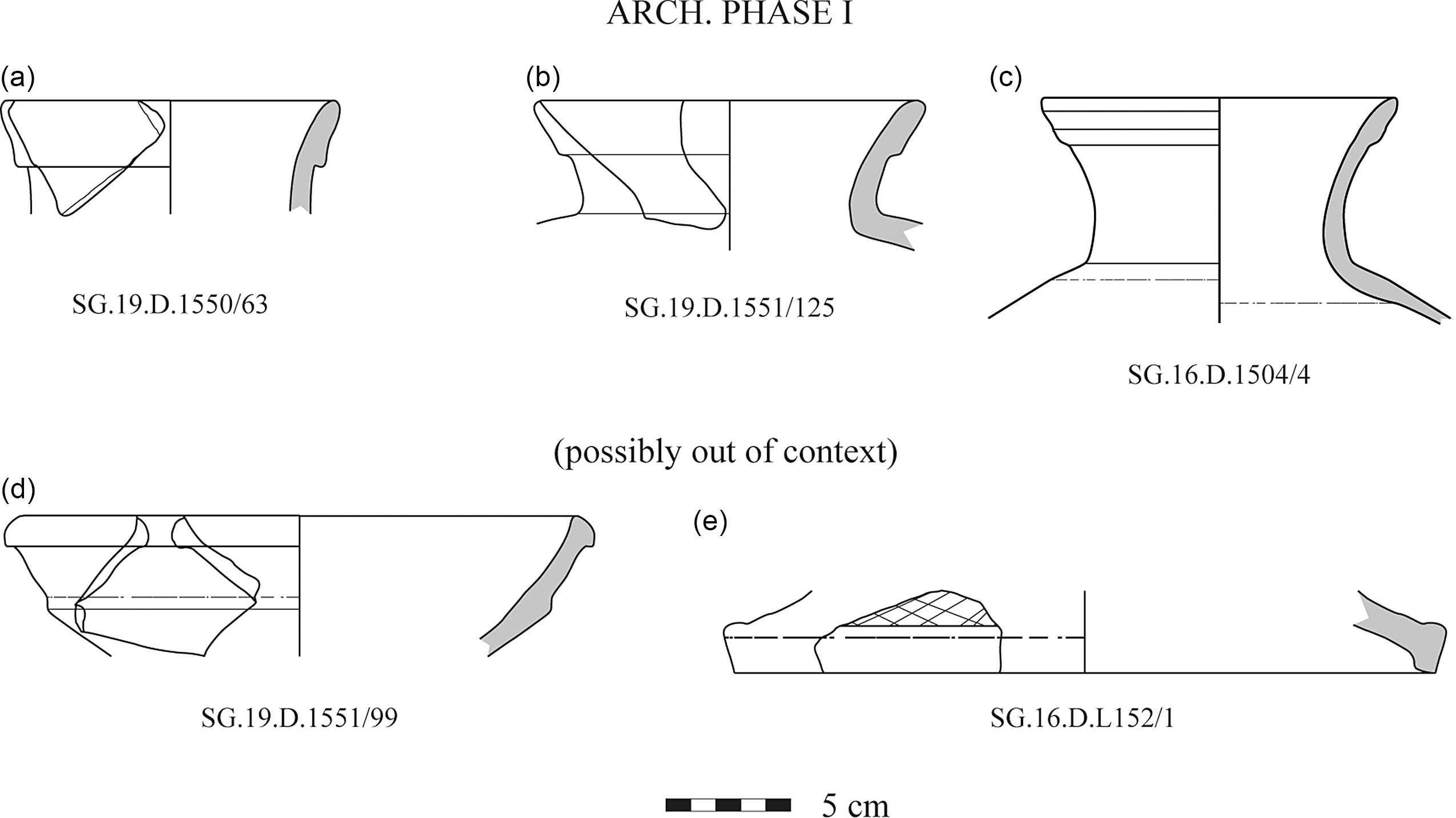
Fig. 10. Distinctive pottery from Arch. Ph. I (© MAIN)
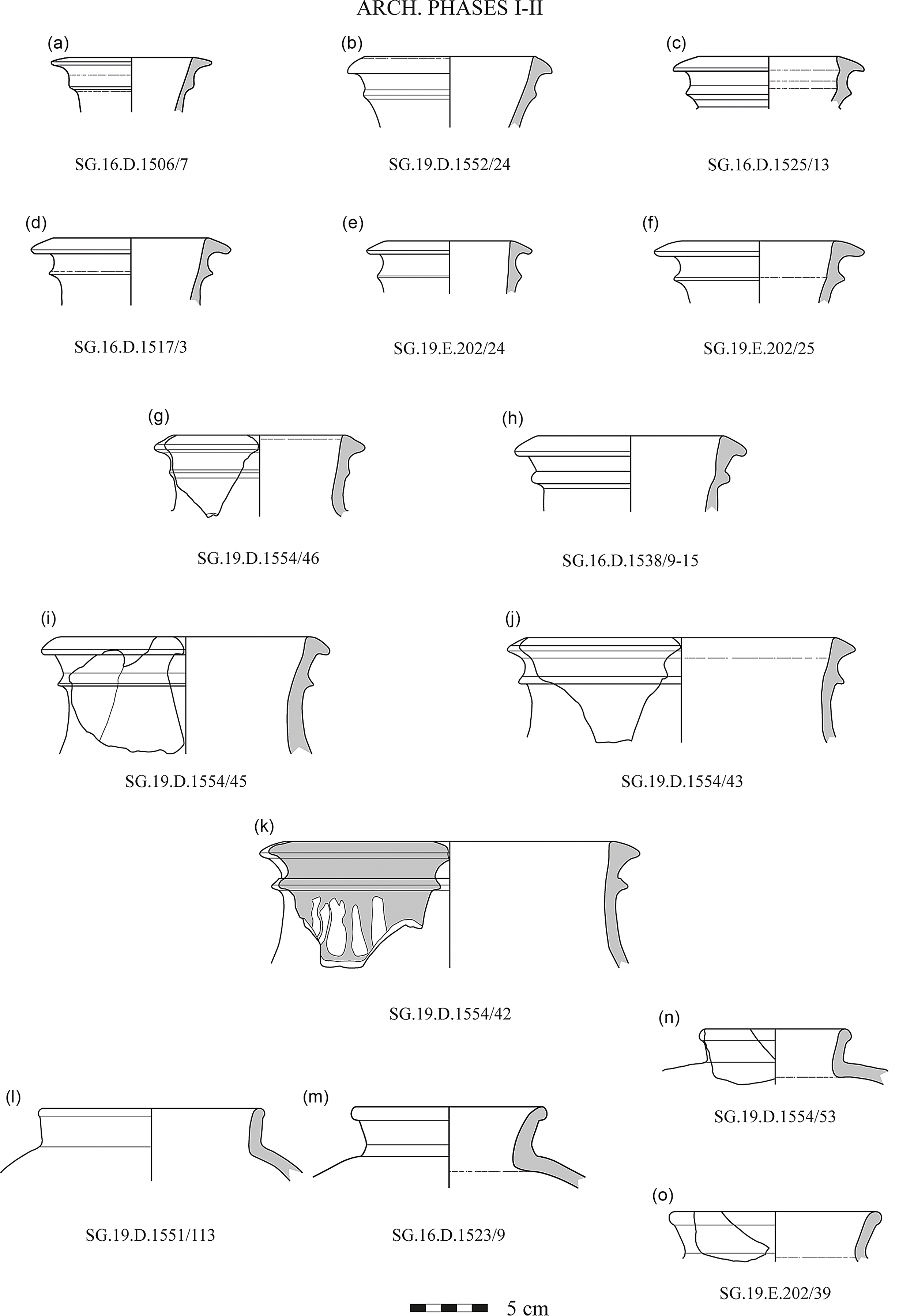
Fig. 11. Long-lasting pottery types attested in Arch. Ph. I and II (© MAIN)
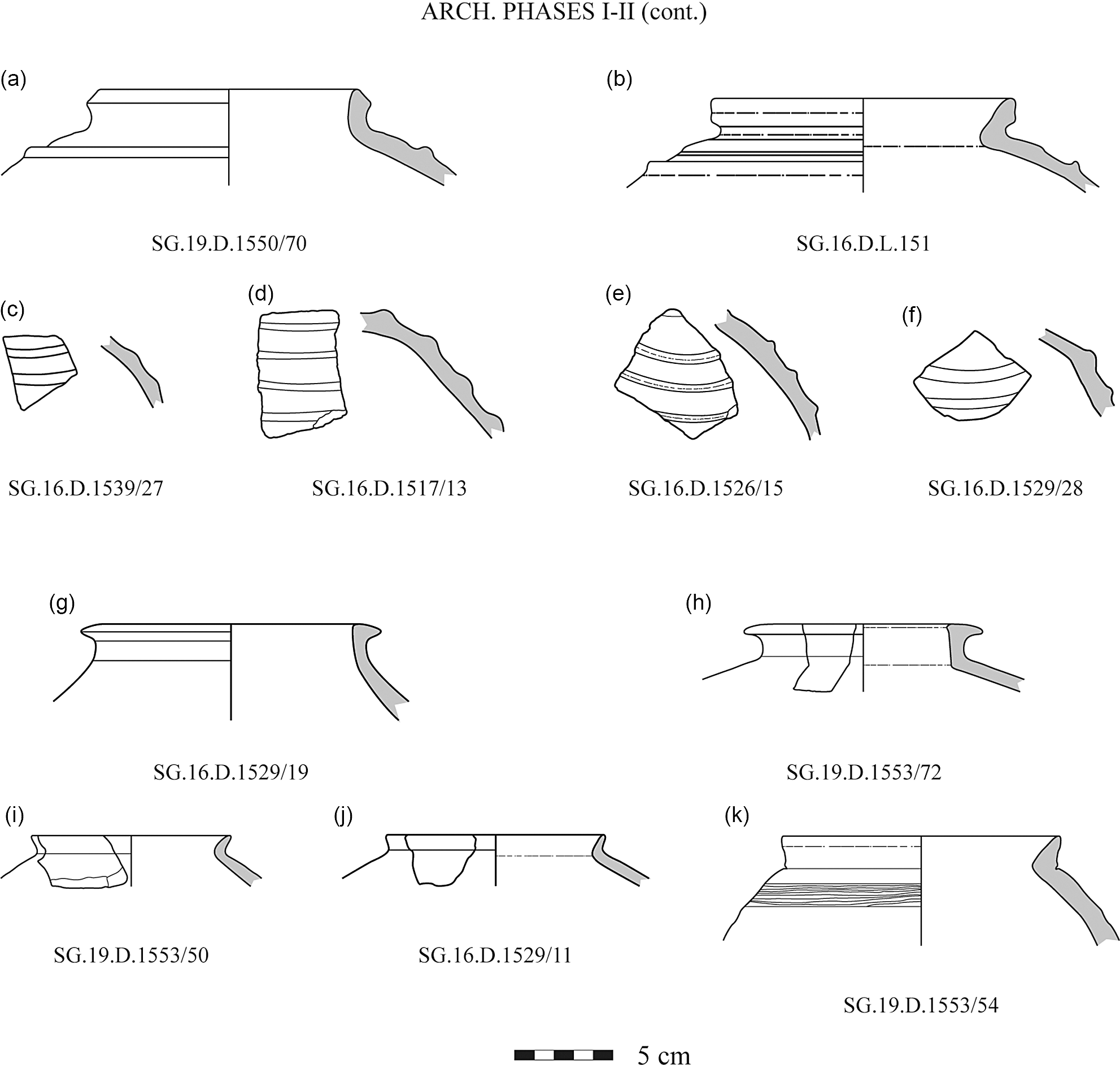
Fig. 12. Long-lasting pottery types attested in Arch. Ph. I and II (© MAIN)
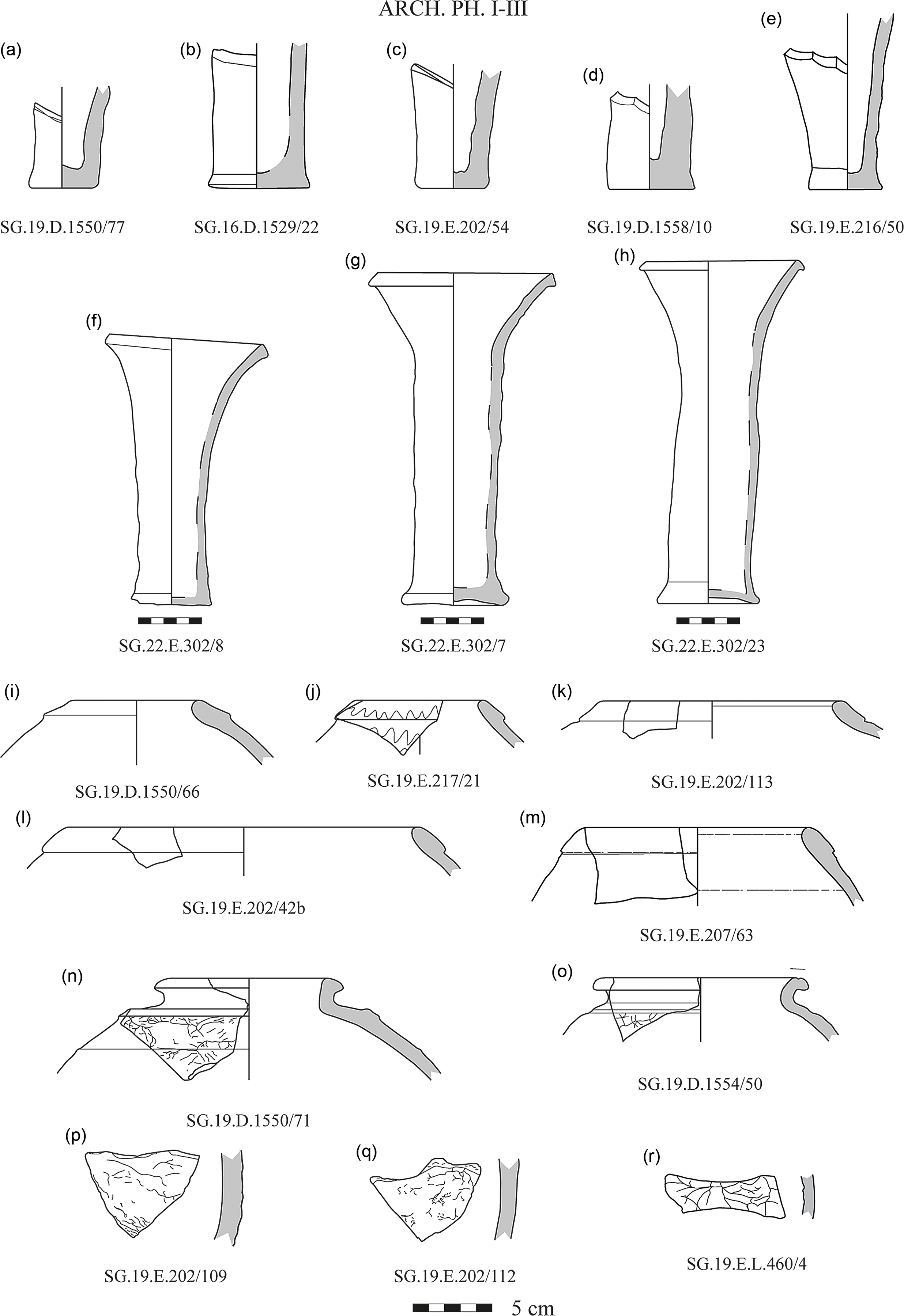
Fig. 13. Long-lasting pottery types attested in Arch. Ph. I–III (© MAIN)
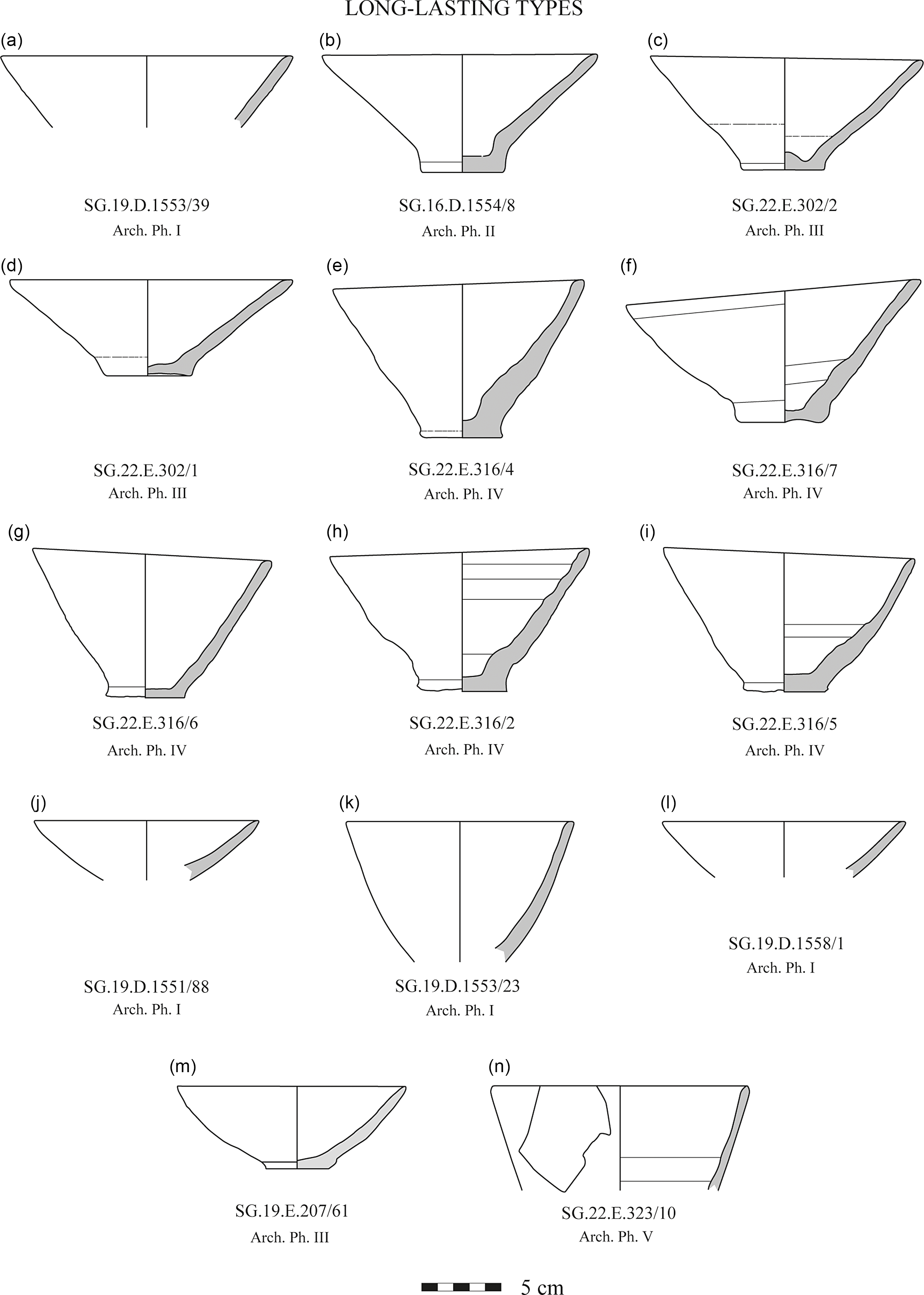
Fig. 14. Long-lasting pottery types attested in Arch. Ph. I–V: conical and globular bowls (© MAIN)
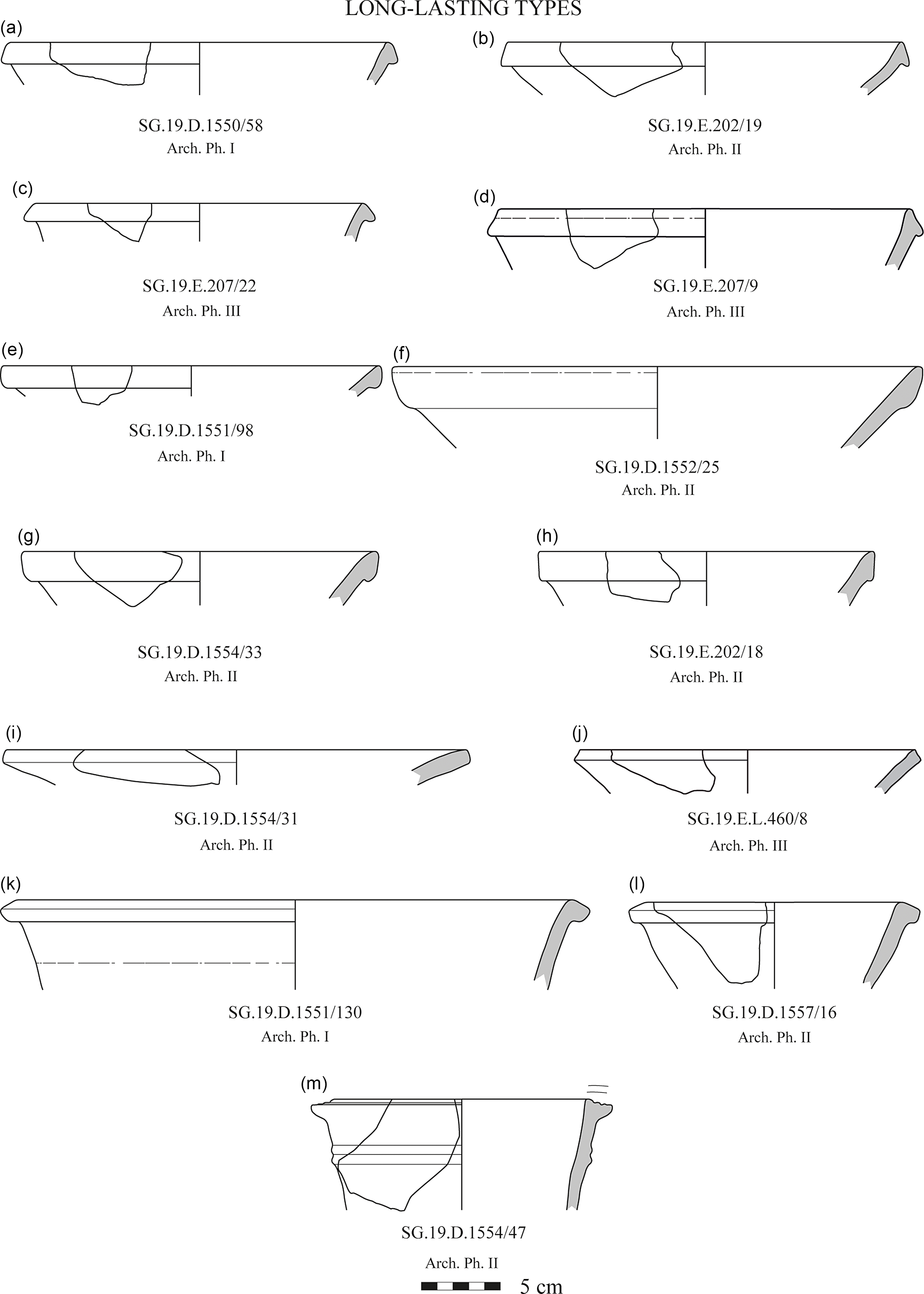
Fig. 15. Long-lasting pottery types attested in Arch. Ph. I–V: bowls (© MAIN)
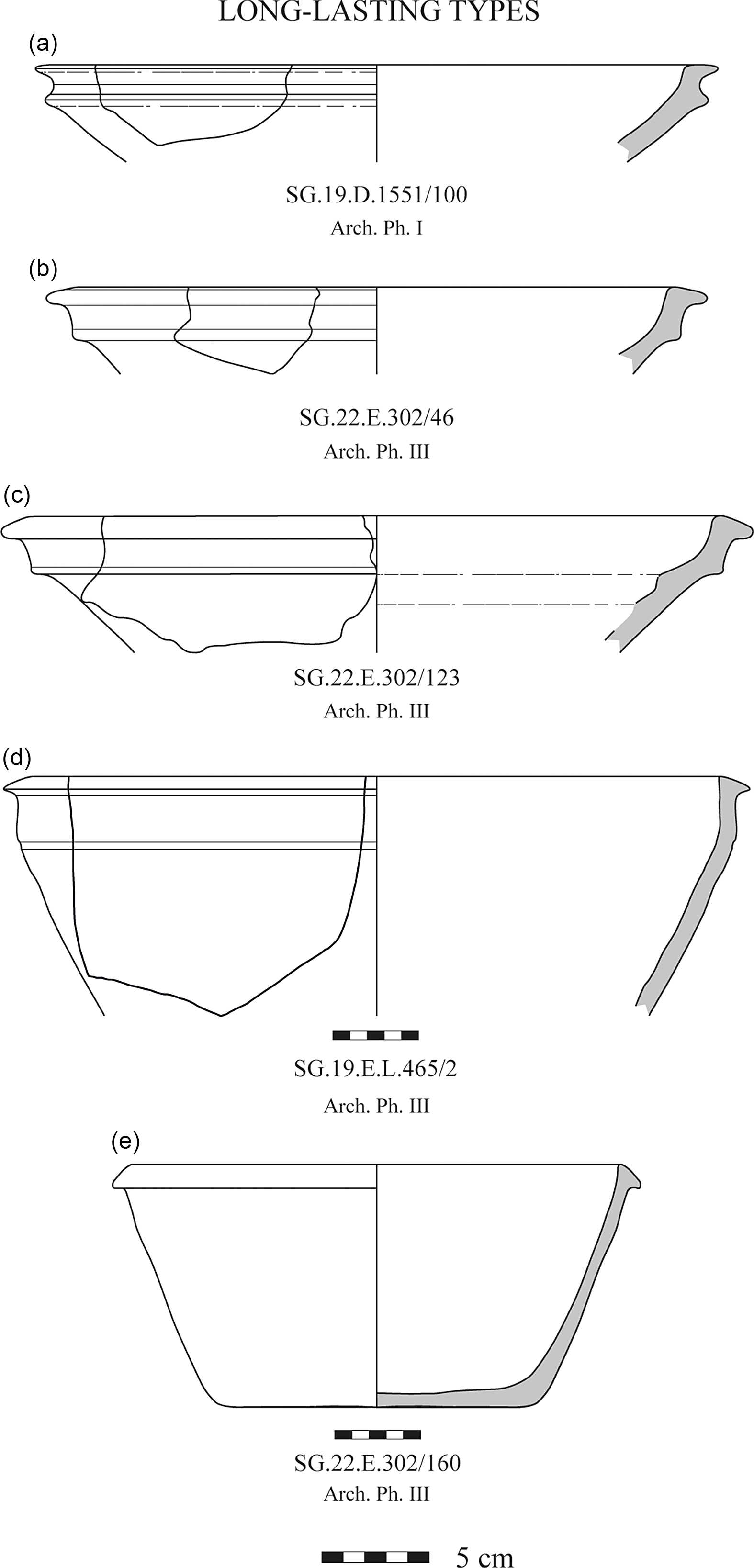
Fig. 16. Long-lasting pottery types attested in Arch. Ph. I–V: fruit-stand shallow bowls and deep bowls (© MAIN)
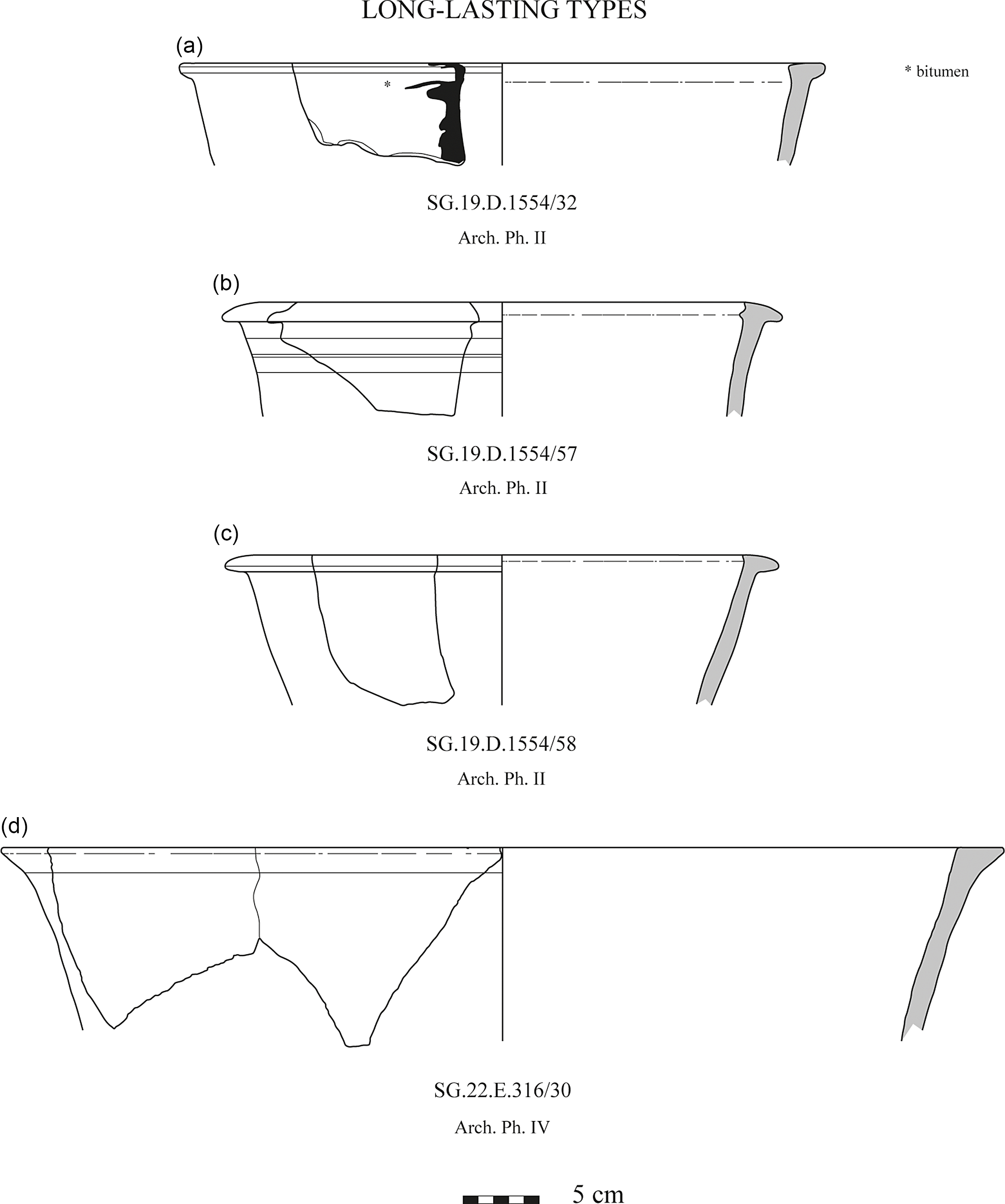
Fig. 17. Long-lasting pottery types attested in Arch. Ph. I–V: vats (© MAIN)
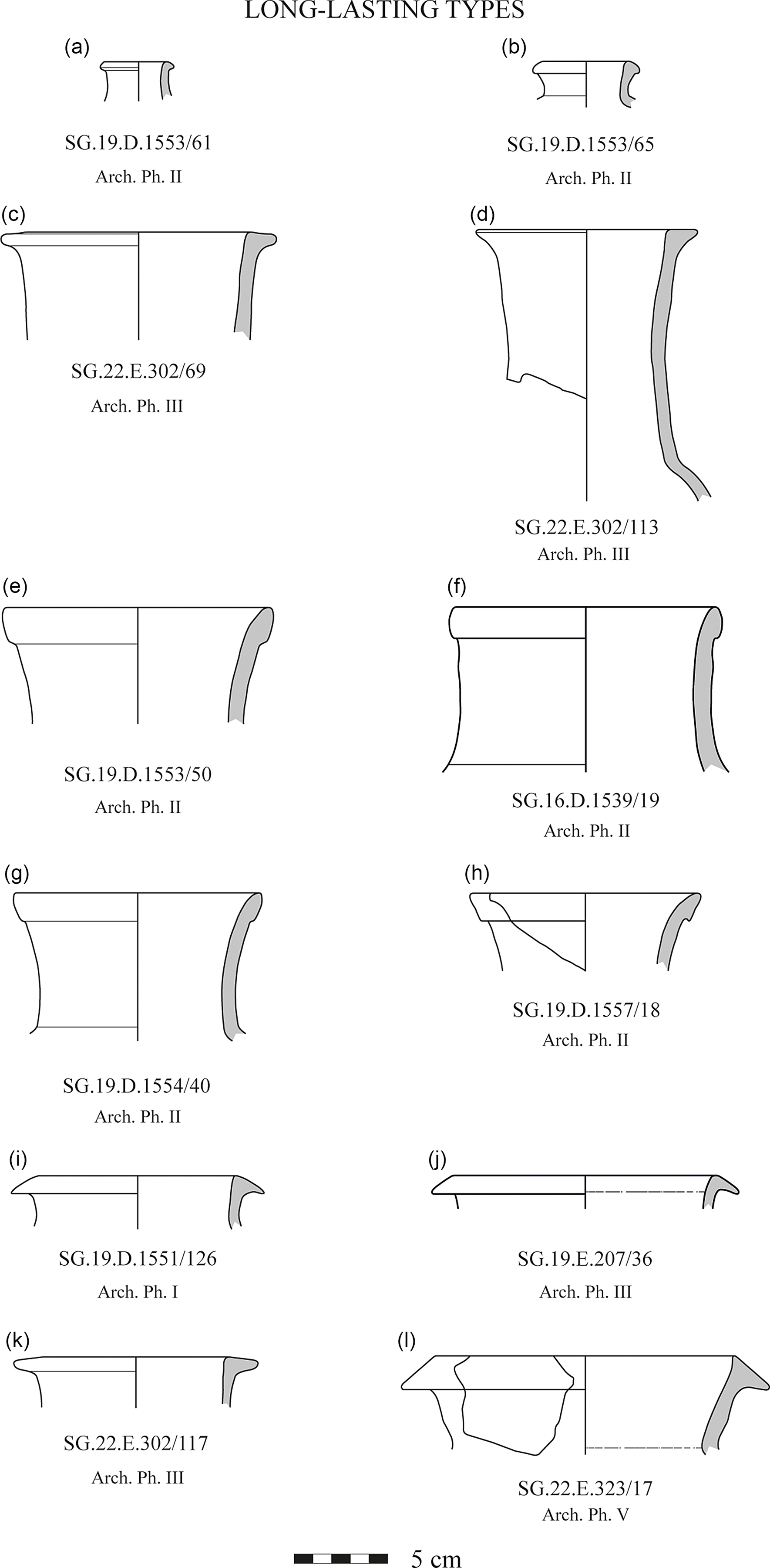
Fig. 18. Long-lasting pottery types attested in Arch. Ph. I–V: bottles and small jars (© MAIN)
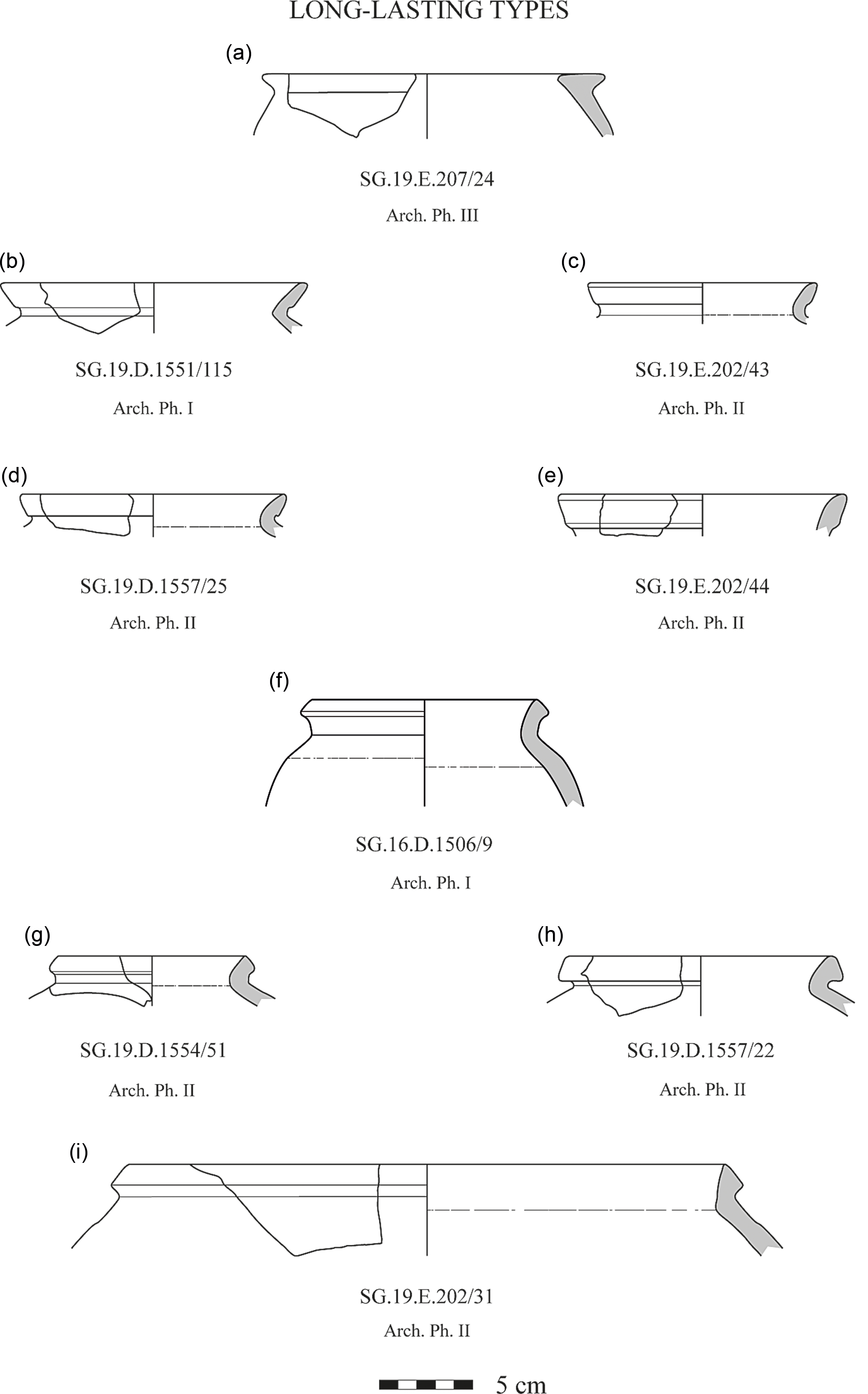
Fig. 19. Long-lasting pottery types attested in Arch. Ph. I–V: neckless jars (© MAIN)
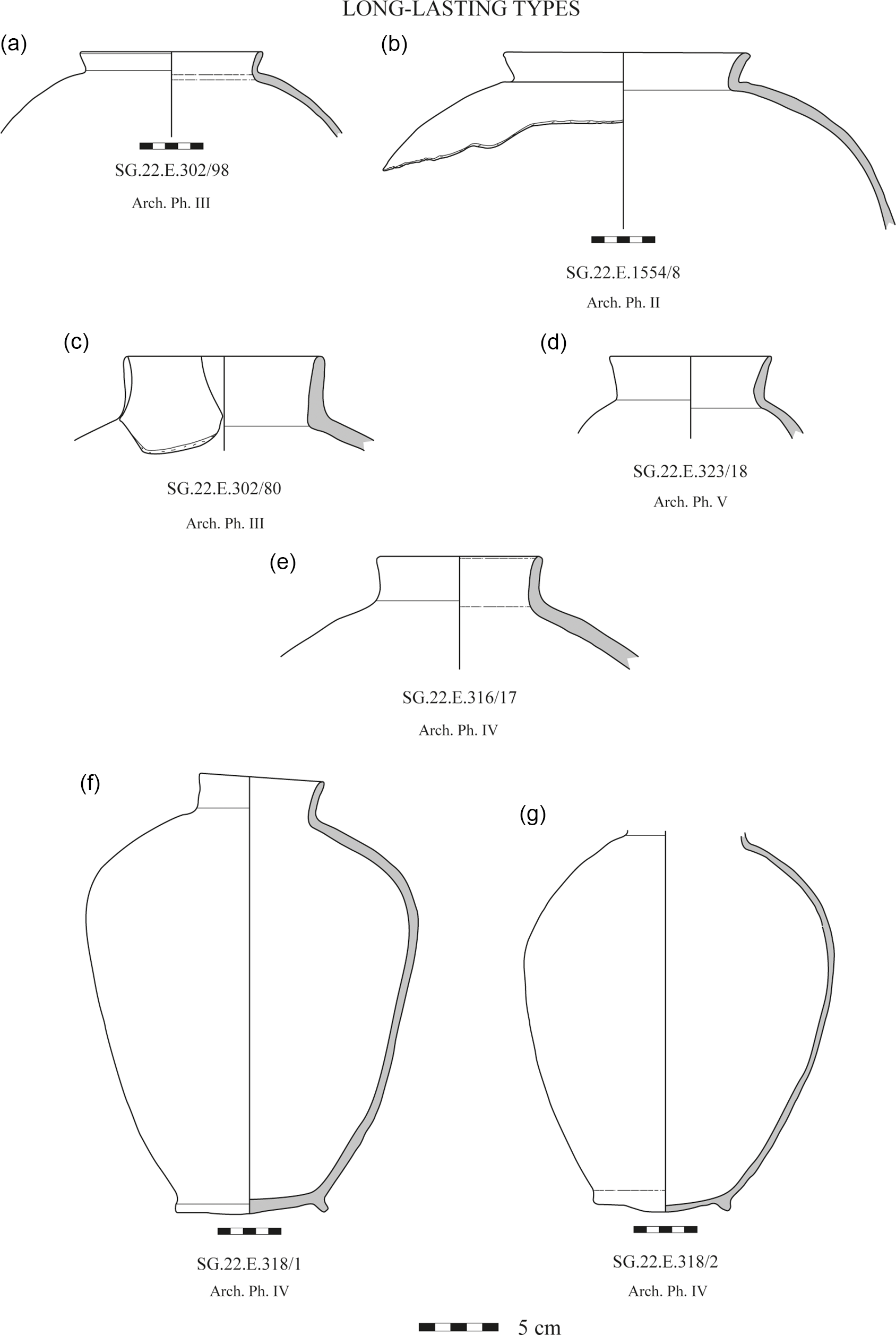
Fig. 20. Long-lasting pottery types attested in Arch. Ph. I–V: necked jars with plain rim (© MAIN)
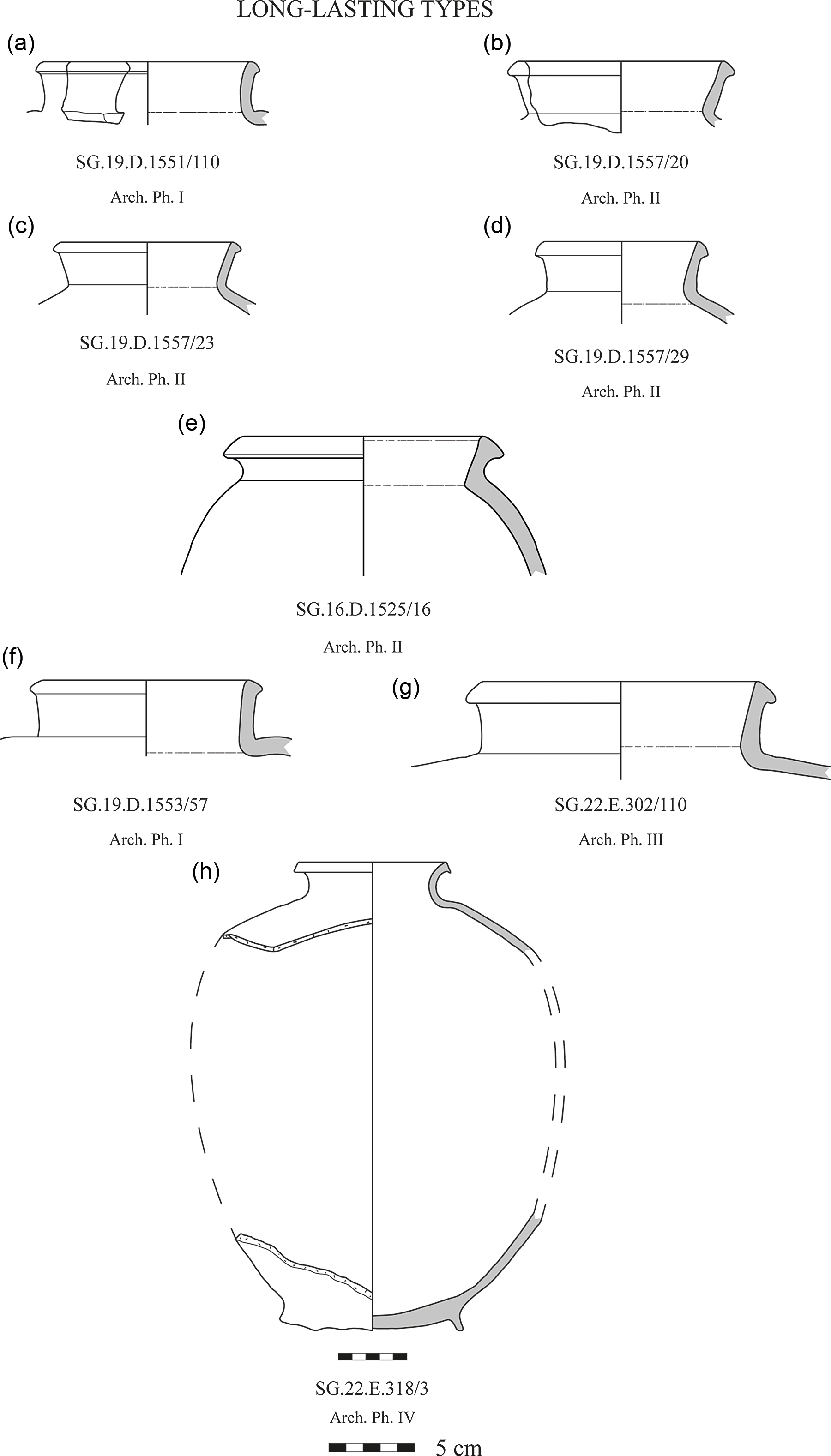
Fig. 21. Long-lasting pottery types attested in Arch. Ph. I–V: necked jars with triangular rim (© MAIN)
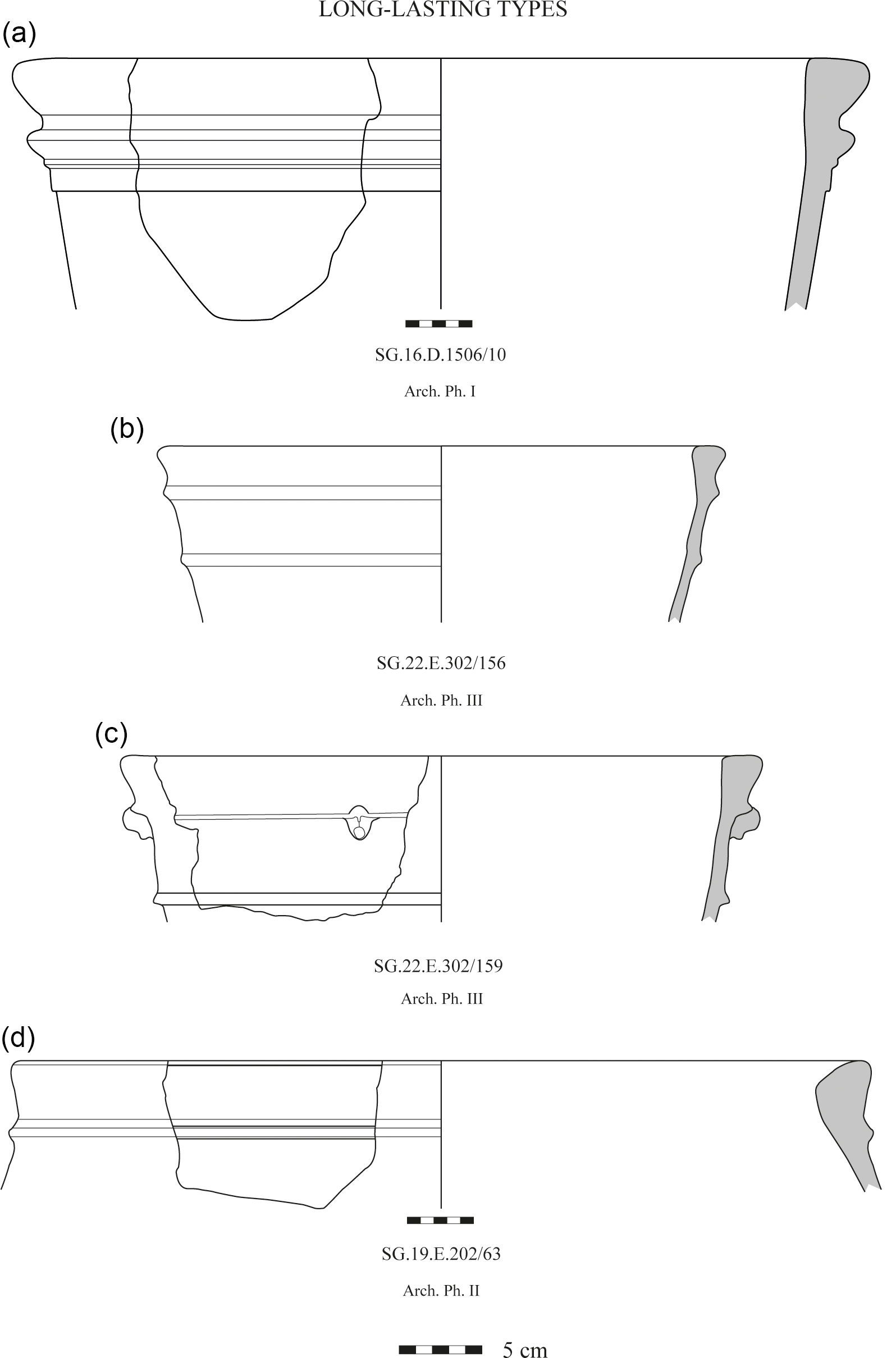
Fig. 22. Long-lasting pottery types attested in Arch. Ph. I–V: basins (© MAIN)
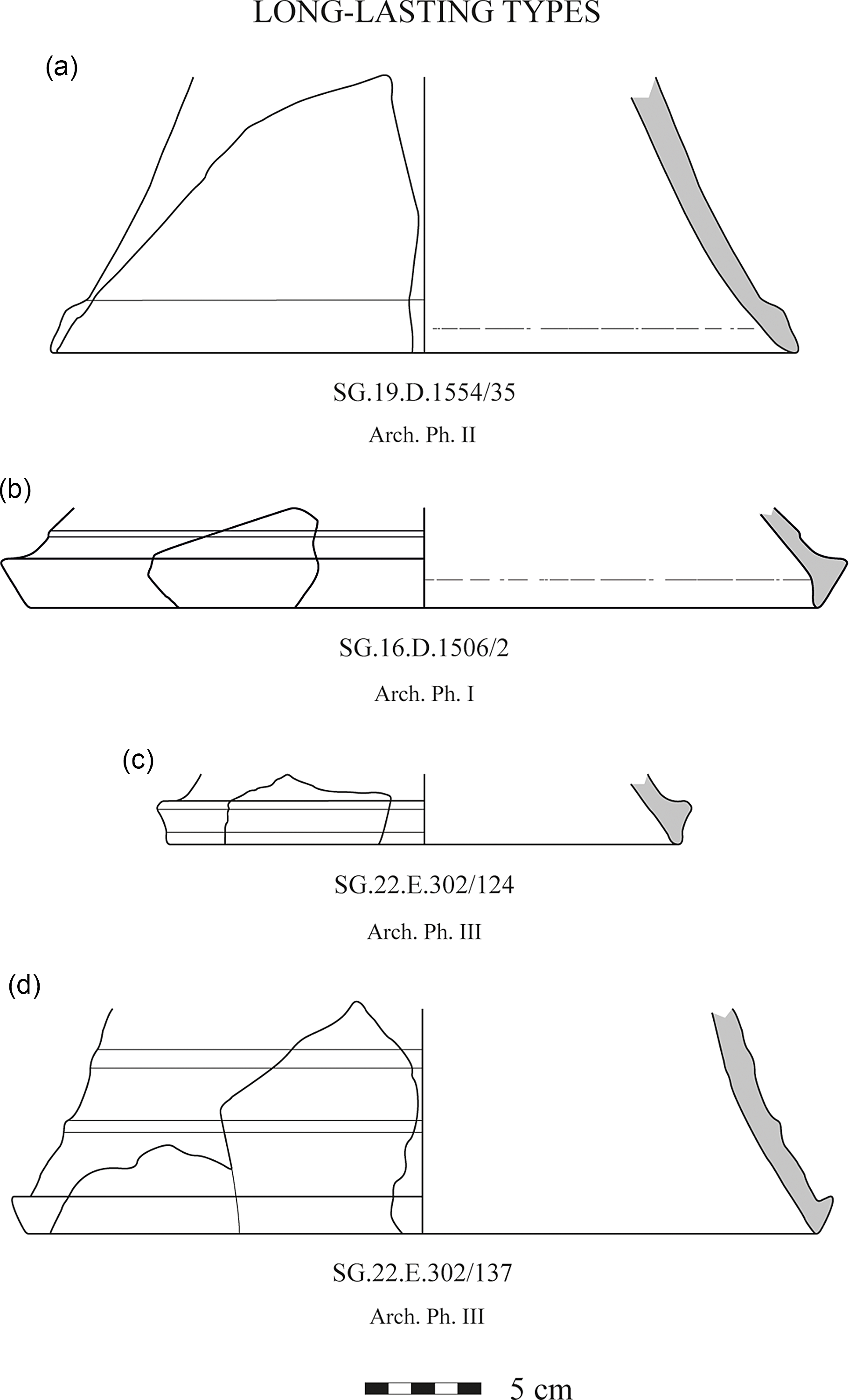
Fig. 23. Long-lasting pottery types attested in Arch. Ph. I–V: stands (© MAIN)
-
- The repertoire of Arch. Ph. I and II can be associated with certainty with the Pottery Phase B. Materials from these phases appear homogeneous and coherent, with some traits clearly pointing towards a Late Akkadian/Post-Akkadian/early Ur III date.
-
- Pottery associated with Arch. Ph. III and IV shows aspects that are typical of an ED III/early Akkadian horizon. The repertoire appears slightly less coherent and homogeneous compared to those of the later Architectural Phases, and a certain degree of dissimilarity between pottery from Arch. Ph. III and Arch. Ph. IV is shown. Materials from Arch. Ph. III are assigned with a degree of certainty to Pottery Phase C. The repertoire of Arch. Ph. IV shows some earlier features that can be ascribed to a mid-ED III period. This, together with the stratigraphy, could support subdivision of Pottery Phase C into two subphases (C.1 and C.2), leaning toward the beginning of the Akkadian period at least for Arch. Ph. III (C.1). However, due to the limited excavation area and ceramic materials, at present this remains only a suggestion that would need to be confirmed by further investigation.Footnote 58
-
- The repertoire of Arch. Ph. V shows signs of an earlier dating to the first half of the third millennium B.C.E. (Pottery Phase E, late ED I/ED I–ED III A transition). Also in this case, the limited excavation area would require a continuation of the investigation. Arch. Ph. V is attested in Mound A at an elevation of c. 8 m above the base of the mound. Considering that Jemdet Nasr/early ED I levels have been found in Area A at Tell Zurghul,Footnote 59 it would be plausible to assume that there are more than eight meters of ED I stratigraphy in the lower portion of the Mound A at Tell Zurghul/Nigin. This would be in line with information from al-Hiba, where seven meters of ED I archaeological deposits were recovered in a deep sounding in Area G.Footnote 60
What follows is a brief description of the most distinctive vessels and sherds described by Architectural Phases. Approximately 58 % of the repertoire consists of conical bowls, typically crudely-produced bowls with string-cut bases (Fig. 14).Footnote 61 This figure slightly fluctuates from phase to phase, and fits into the process of transformation from conical beakers to conical bowls that occurs in the mid-third millennium B.C.E., in particular regarding Arch. Ph. I-IV.Footnote 62
Arch. Ph. V is the lowest phase identified thus far in the main mound. It has been reached exclusively in Area E of the 2022 excavation (SU 323 and 328). The materials belong to Pottery Phase E and can be dated to the first half of the third millennium B.C.E. (Fig. 6).
The ledge rim jar with a row of fingernail impressions at the base of the neck and a radial reserved-slip decoration on the shoulder is a distinctive type of this phase (Fig. 6: d–e). The rim type and the reserved-slip decoration are two features mostly attested at the beginning of the third millennium B.C.E. Comparisons are found, e.g., at al-Hiba (Phase L),Footnote 63 and at Tell Asmar, Abu Temple, AS III.Footnote 64 The four-lugged jar with a triangular rim is characterized by two rows of fingernail impressions below the neck and by incised decorations on the shoulder (Fig. 6: f). The incisions form two vertical triangles, filled with grid-pattern incisions. This type finds comparisons in Fara, DE 38/39, lev. 2.Footnote 65 A sherd (only the shoulder is preserved) of a jar with wing-lug is characterized by a carinated shoulder with a horizontal ridge decorated with fingernail impressions (Fig. 6: g).Footnote 66 The shoulder is also decorated with circle impressions and cross incisions. Comparisons are recovered, e.g., at al-Hiba,Footnote 67 and at Abu Salabikh (contexts not selected in Tab. 2b).Footnote 68
The small number of diagnostic vessels does not allow for an exhaustive assessment and requires further excavation. However, the presence of some specific pottery traits (i.e., four-lugs, reserved-slip decoration) indicates a dating to the first half of the third millennium B.C.E. Since reserved-slip decoration is also attested in small numbers during the ED III,Footnote 69 and there is a significant lack of the typical ED I marker (solid-footed goblets), the association of the traits in Arch. Ph. V could suggest a dating between the late ED I and the ED I–ED IIIA transition.Footnote 70
The pottery horizon of Arch. Ph. IV shows several types that exclusively belong to this phase, dated to the mid-ED III horizon (Fig. 7). Selected stratigraphic units (SU) are SU 316 and SU 318.
The pedestal base of a stemmed dish is characterized by a narrow, cylindrical body, with three ridges close to the foot decorated with lines of notched impressions (Fig. 7: c). This type of stemmed dish is not commonly attested, and it seems to represent an earlier development of the wide-footed decorated stemmed dishes. The type finds a good comparison in Nippur WF, lev. XIXB.Footnote 71 Of interest are two large jars with bevelled rims. The first is characterized by a wide, non-distinct shoulder decorated with a row of fingernail impressions, and an ovoid body (Fig. 7: h). Comparisons can be found at al-Hiba (two specimens come from Phase I, dated at the transition between late ED I and ED IIIA; other specimens are also attested in earlier phases)Footnote 72 . The second has a similar shape and is characterized by a short vertical spout on the shoulder (Fig. 7: i). ED IIIA comparisons are attested at Abu Salabikh (contexts not selected in Tab. 2b),Footnote 73 and at Larsa, in Bâtiment B 33 (Phase IIIA).Footnote 74
Arch. Ph. III has been investigated in Area E of the 2019 and 2022 excavations; the most coherent stratigraphic units and loci considered in the present contribution are: SU 207, SU 302, L.465 and L.490 (Fig. 8). The pottery recovered in this phase presents some similar traits to Arch. Ph. IV. This, together with the fact that a larger number of types begin in later Arch. Ph. II, made it possible to distinguish this phase from the next one, from a chronological point of view, and to assign the materials to Pottery Phase C (probably a later subphase C.1).
The first distinctive type is a fruit-stand shallow bowl with a flattened lip, wide notched rim, and a sharp-defined notched band below the rim (Fig. 8: a–b). It presents a decorated pattern composed of horizontal lines of notches. Comparisons are found at Nippur WF, lev. XVII-XII;Footnote 75 at al-Hiba, mostly attested in ph. G;Footnote 76 at Abu Salabikh in a large number of graves (grave numbers 1, 2, 26, 28, 32, 35, 38, 50, 61, and 84);Footnote 77 and at Abu Tbeirah in the ‘Cemetery Area’Footnote 78 and ‘Building A’.Footnote 79 The conical cup with a flattened lip, outwardly bevelled rim, and a series of horizontal grooves in the outer walls is a distinctive type attested only in Arch. Ph. III (Fig. 8: c). A similar vessel is attested in Nippur WF, Burial 14 (possibly belonging to lev. XIV);Footnote 80 at al-Hiba in Area C, Phase G;Footnote 81 at Tell Ingharra/Kish in the graves of Tell A;Footnote 82 and at Umm el-Jir, Area D ph. IV.Footnote 83 Another distinctive type is a jar with a plain lip, outward-flaring rim, narrow cylindrical neck, and a wide diagonal shoulder with an applied rope decoration (Fig. 8: f). This type of shoulder with applied rope decoration is frequent in the so-called ‘spouted jars’ and ‘single-handled jars’ of the ED period;Footnote 84 however, the specimen from Tell Zurghul is fragmentary, and the preserved portion has no traces of the applied handle. Tall bell-shaped jars with a flattened lip, triangular rounded rim, and a ridge immediately below the rim are found within a filling layer immediately above the floor of Arch. Ph. III (Fig. 8: g–i). The type is often considered typical of the very late third millennium B.C.E.Footnote 85 However, it is possible that the specimens from Tell Zurghul/Nigin represent a precursor to a more slender type occurring in the late third millennium B.C.E. The main comparisons come from al-Hiba, Phase G.Footnote 86 Lastly, a concave stand with a triangular band rim finds comparisons at al-Hiba, where it first appears in Phase I and reaches its peak in Phases F, E and D (Fig. 8: p–q).Footnote 87 A similar specimen with a triangular band rim on the base, and a plain rim on the upper part of the vessel, is known, e.g., from Abu Salabikh, grave 48.Footnote 88 Chronologically speaking, comparisons for the above-described types point to a date between the end of the ED IIIB and the early Akkadian period.
At a ceramic level, Arch. Ph. II is characterized by the appearance of a whole series of new types not attested in the previous Architectural Phases and continuing into the later one. Among these are a number of well-known types (the so-called ‘double-ridged-rim’ jars, the ‘triple-ridged-rim’ jars, and the ‘Akkadian jars’) typical of the final phase of the third millennium B.C.E. (Figs. 11–12). Their appearance is chronologically dated from the late Akkadian to the early Ur III period, also covering the so-called ‘post-Akkadian’ period to which the king Gudea of Lagash belongs. Therefore, Arch. Ph. II fits well within the Pottery Phase B previously described. Stratigraphic units and loci assigned to Arch. Ph. II have been excavated in the upper part of Area E in 2019 (SU 202), in the lower portion of Area D in 2019 (SU 1552, SU 1554, SU 1555/1556, SU 1557/1558, and SU 1559), and in the lower part of Area D in 2016 (SU 1529, SU 1537, L.162) (Fig. 9).
The first type is represented by a deep, globular bowl with a diagonally-flattened lip and a thickened outside triangular rim. Below the rim there is an attached ridge with or without impressed decorations (Fig. 9: a–b). Comparisons for this type are attested at Nippur in area WF, from lev. XIX to lev. VI;Footnote 89 at Abu Tbeirah in ‘Building A’;Footnote 90 at al-Hiba, where this type reaches its peak in Phase H and then decreases in numbers from Phase G to D;Footnote 91 and at Larsa, in Bâtiment B 33 (Phase IIIA-B).Footnote 92 The small, conical cup with a horizontally flattened lip, a slightly thickened rim, and a flat base is an interesting type identified in Arch. Ph II (Fig. 9: c). Comparisons are attested at Nippur in area WF, lev. XIII-XI,Footnote 93 and in area TB, lev. XI;Footnote 94 at Abu Salabikh, grave 79;Footnote 95 at Tell Asmar in Houses IIIFootnote 96 and in the Northern Palace, Main Level;Footnote 97 at Uruk, Areal P 6, Bauschicht 3;Footnote 98 and at Tell al-Wilaya.Footnote 99 Following van Ess, this type is particularly represented in the Late Akkadian period but is also attested in the Ur III period.Footnote 100
It is interesting to discuss here another type of small jar attested in Arch. Ph. II. The specimen is an example of a pear-shaped jar with triple-ridged-rim (Fig. 9: g). The type is considered a typical element for identifying the final part of the third millennium B.C.E. However, as already evidenced by Casadei, this type of rim appears simultaneously with its ‘double-ridged’ counterpart but remains attested after the disappearance of the ‘double-ridged’ version.Footnote 101 Comparisons are found at Nippur in WF lev. XIA-VBFootnote 102 and TB, lev. VII-II;Footnote 103 at Ur in PG 643 and PG 1850 burial 1;Footnote 104 at Tell Asmar in the level assigned to Ituria of the ‘Palace of the Rulers’;Footnote 105 at Uruk in the Sinkašid-Palace Area, levels 1,Footnote 106 and in Areal P 6, burials 4 and 6;Footnote 107 and at Tell al-Wilaya.Footnote 108
Another interesting specimen is the rim of a probably small, closed vessel. Only the upper part of the vessel is preserved. The sherd is characterized by a plain lip, an outward-flaring rim with a horizontal narrowing in the middle, and a narrow cylindrical neck (Fig. 9: j). No clear comparisons within the selected key contexts have been found for this type, while a similar specimen has been recognized in the surface collection of the north-western sector of Larsa, assigned to the first half of the third millennium B.C.E.Footnote 109
Two fragments of so-called ‘tall collared’ jars have been recovered in Arch. Ph. II. This type is characterized by a plain lip, a slightly flaring rim, a medium-long cylindrical neck, and a shoulder (sometimes with ridges) marked by a shallow carination (Fig. 9: k–l). Tall, collared jars seem to be distinguished into at least two variants based on the morphology of the body. The earlier version is characterized by a globular body, while the later one is distinguished by a tall cylindrical body.Footnote 110 In the specimens from Tell Zurghul/Nigin, the bodies are missing, but they could probably be associated with the earlier version of the type. Comparisons are found at Nippur in area WF, lev. XIIIB-VI,Footnote 111 area TB, lev. XI-VIII,Footnote 112 and area WC-3, lev. Vb;Footnote 113 at Tell ed-Der Sounding A, lev. III d;Footnote 114 at Ur in PG 735, PG 825, PG 1422, PG 869 A, PG 1093, PG 1384, PG 1845 burial F and burial K, PG 1846 burial C, PG 1847 burials A, C, G, L, and T, PG 1849 burial A, D, and F, PG 1850 burial 7, and 13;Footnote 115 at Uruk in the Sinkašid-Palace Area, levels 1-2,Footnote 116 and in Areal P 6, Bauschicht 4;Footnote 117 and at Tell Asmar Houses IVa.Footnote 118
As for large jars, a fragment of double-ridged-rim jars with wide neck is found in this Arch. Ph (Fig. 9: m). This type is attested at Nippur WF only between levels XVII and XIIIFootnote 119 and chronologically it was considered “a marker of the transition between ED and Akkadian as it seems to have been restricted to the very end of the ED and early in the Akkadian period”.Footnote 120 Comparisons for this type are also widely attested at al-Hiba in Phase G;Footnote 121 at Abu Tbeirah in the ‘Cemetery Area’Footnote 122 and in ‘Building A’;Footnote 123 at Tulul al-Baqarat, TB1 sounding S10;Footnote 124 as well as at Tell Asmar in Houses IVa.Footnote 125 There are also some decorative features that seem to be distinctive of Arch. Ph. II. In particular, some specimens present a red slip/wash cover on the outer surfaces (Fig. 9: p–r). The feature has already been evidenced in Nippur WF, Burial 16, lev. XIVB;Footnote 126 at al-Hiba, Phase G;Footnote 127 and at Umm el-Jir, Area B lev. 8–7,Footnote 128 Area B lev. 3a,Footnote 129 and Area D ph. III-IV.Footnote 130
At Tell Zurghul/Nigin, the stratigraphic units and loci assigned to Arch. Ph. I have been excavated in Area D in 2016 (SU 1506, SU 1507, L.151, and L.152) and in Area D in 2019 (SU 1550, SU 1551, SU 1553) (Fig. 10). A very limited number of types are attested exclusively in this phase, while a strong continuity with the previous Arch. Ph. II is documented. Moreover, no typical indications of the period between the second part of the Ur III kingdom and the first centuries of the Isin-Larsa period are identified (Pottery Phase A), suggesting an end of the principal use of the mound before the turn of the second millennium B.C.E. The only interesting type attested exclusively in Arch. Ph I is a band rim jar, characterized by a plain lip, a slightly outward-flaring band rim, a short or medium cylindrical neck and a wide distinctive shoulder without carination (Fig. 10: a–c). Comparisons are identified at Nippur WF, lev. XIXB-VII;Footnote 131 at al-Hiba, Phases H-A (in Renette’s typology, type HL-10 is divided into three sub-types, attested for the entire second half of the third millennium B.C.E.);Footnote 132 and at Tulul al-Baqarat, TB1 soundings S4,Footnote 133 S4/S7,Footnote 134 and S10.Footnote 135
The presence in Arch. Ph. I of a fragment of fruit-stand pedestal base with incised grid decorations is doubtful (Fig. 10: e). This type is generally assigned to the end of the ED III and the early Akkadian period, and comparisons are found, among others, at Nippur WF, lev. XVIIB-XIIIB,Footnote 136 and at Abu Tbeirah in the ‘Cemetery Area’Footnote 137 and in ‘Building A’.Footnote 138 The presence of this type in the late third millennium B.C.E. is less attested; moreover, this specific specimen could also be ‘out of context’.Footnote 139
Many ‘long-lasting types’ are attested continuously for all or part of the investigated sequence (Figs. 11–23). As already suggested, the first noticeable aspect to emerge is the absence of a series of highly distinctive types in Arch. Ph. III, which instead appear in Arch. Ph. II and remain in use in Arch. Ph. I (Figs. 11–12). Among them, pear-shaped jars with double-ridged-rim are attested in a high number at Tell Zurghul/Nigin, and they can be distinguished into at least two variants according to mouth width and body morphology (Fig. 11: a–k).Footnote 140 Both variants are characterized by a flattened lip, a triangular, thickened-outside rim, and a cylindrical neck with a ridge immediately below the rim. Interestingly, both variants are only attested in SU assigned to Arch. Ph. II and I. Comparisons (variants are not considered here) are widely attested at Nippur in WF, lev. XIIIB-VIII,Footnote 141 and TB, lev. XII-XI;Footnote 142 and at Ur in PG 323, PG 829, PG 908, PG 1422, PG 1425, PG 1847 burials A, P, and T, PG 1849 burial F and burial G, PG 1850 burial 9.Footnote 143
Another type attested in Arch. Ph. II and I is a jar type characterized by a series of ridges on the outer shoulder. These are called ‘Akkadian jars’, and they present a plain or flattened lip, a triangular rim, a very short, cylindrical neck, and a distinct, ridged shoulder (Fig. 12: a–f).Footnote 144 Comparisons are found at Nippur in area WF, lev. XIIC-VI,Footnote 145 area TB, lev. XI,Footnote 146 and area WC-3, lev. Vb;Footnote 147 at al-Hiba, Phases E-C;Footnote 148 at Abu Tbeirah in the ‘Cemetery Area’;Footnote 149 at Ur in PG 735, PG 746, PG 1422, PG 1425, PG 1398, PG 1845 burial K, PG 1846 burial C, PG 1847 burial G, PG 1849 burial F, PG 1850 burial 1, PG 1793;Footnote 150 at Tell Asmar in Houses IVaFootnote 151 and in the Northern Palace, Main Level;Footnote 152 and at Uruk, Areal P 6, Bauschicht 4.Footnote 153
As for long-lasting types attested in Arch. Ph. III-I (Fig. 13), noteworthy is a type of hole-mouth jar, characterized by a plain lip, a band rim created by folding over the rim against the top of the vessel, and a globular body (Fig. 13: i–m). At al-Hiba, the type is mainly attested in Phases F to C.Footnote 154 One specimen from Tell Zurghul presents an incised wavy-line decoration over the outer rim (Fig. 13: j). In Arch. Ph. III-I, there is also the presence of tall straight-sided beakers with a triangular rim and a flaring mouth (Fig. 13: a–h). Comparisons are found at al-Hiba from Phase I to C;Footnote 155 at Tell Asmar in Houses IVa-II;Footnote 156 and at Wilaya.Footnote 157 A surface decoration defined as ‘textured slip’ is also attested in Arch. Ph. III-I. The decoration is characterized by a surface layer creating a series of heterogeneous ripples (Fig. 13: n–r). Comparisons are found at Nippur in area WF, lev. XIIBFootnote 158 and area TB, lev. IV;Footnote 159 at al-Hiba in Phases E and D;Footnote 160 and at Umm el-Jir, Area B lev. 5Footnote 161 and Area D ph. III.Footnote 162
Due to the limited data for Arch. Ph. IV and V, it is difficult to clearly identify the types of long duration of these phases. In addition to the frequent occurrence of conical bowls, the general impression is that some types attested in the upper phases continue into Arch. Ph. IV, while many of them disappear in Arch. Ph. V. Further investigation will confirm this observation.
Concluding remarks
Archaeological investigations on Mound A at Tell Zurghul/Nigin have revealed a long occupational sequence. The chrono-typological analysis of the pottery materials recovered during the 2016, 2019 and 2022 excavations has clearly shown that Mound A was occupied from at least the first half of the third millennium B.C.E. Three main phases of use, subdivided into five Architectural Phases (I-V), have been so far identified in Areas D and E in the upper part of the mound.
Arch. Ph. I and II are characterized by a sequence of horizontal superimposed layers found on the top of the mound. They could be related to building activities carried out at the end of the third millennium B.C.E., potentially connected with the work of upraising the É-Sirara Temple of Nanshe by Gudea of Lagash. The pottery materials of Arch. Ph. I–II present only limited differences at a ceramic level, suggesting a continuous use of the area, indicating dating between the end of the Akkadian and the beginning of the Ur III period, in historical chronology. The most distinctive feature of these phases is the presence of a number of types that are not represented in Arch. Ph. III, including some well-known types such as the double-ridged-rim and triple-ridged-rim small jars, so-called ‘Akkadian jars’, and tall, collared jars. The repertoire fits well within Pottery Phase B. Another feature worth mentioning is the absence of clear ceramic indicators that point to a later period, i.e. the period between the second part of the Ur III kingdom and the first centuries of the Isin-Larsa period (Pottery Phase A). In our reconstruction, this absence means that the city of Nigin was destroyed at the end of the third millennium B.C.E., and the site in the second millennium B.C.E. was only sporadically occupied.Footnote 163 This would also be in line with the mythical-historical narrative recounted in the ‘Lamentation over the Destruction of Sumer and Ur’, with reference to the fleeing of the goddess Nanshe after her temple had been destroyed.Footnote 164
Arch. Ph. III and IV show a different functional organization of the area. The excavations have identified open areas with several installations (tannur, fireplaces, drains) for working activities, possibly related to the ancient É-Sirara Temple built during the First Dynasty of Lagash. The pottery recovered in Arch. Ph. III-IV belongs to a ceramic phase dated in historical chronological terms between the ED III and the early Akkadian period. This dating clearly highlights that the enormous construction works cited by Gudea in his inscriptions were superimposed on an area with previous buildings. The analysis of charcoal from the excavation of SU 207 (SG.19.79) provided a time span (2306–2135 calB.C.E.) that predates the Architectural Phase of re-occupation and rebuilding of the mound promoted by Gudea (Fig. 24a).Footnote 165 This is the first time we have evidence of ED III/early Akkadian in situ levels at Tell Zurghul/Nigin; up to now the only traces dating to the middle of the third millennium B.C.E. were from textual sources recovered in the filling of the so-called ‘Koldewey’s pit’ in Mound B.Footnote 166
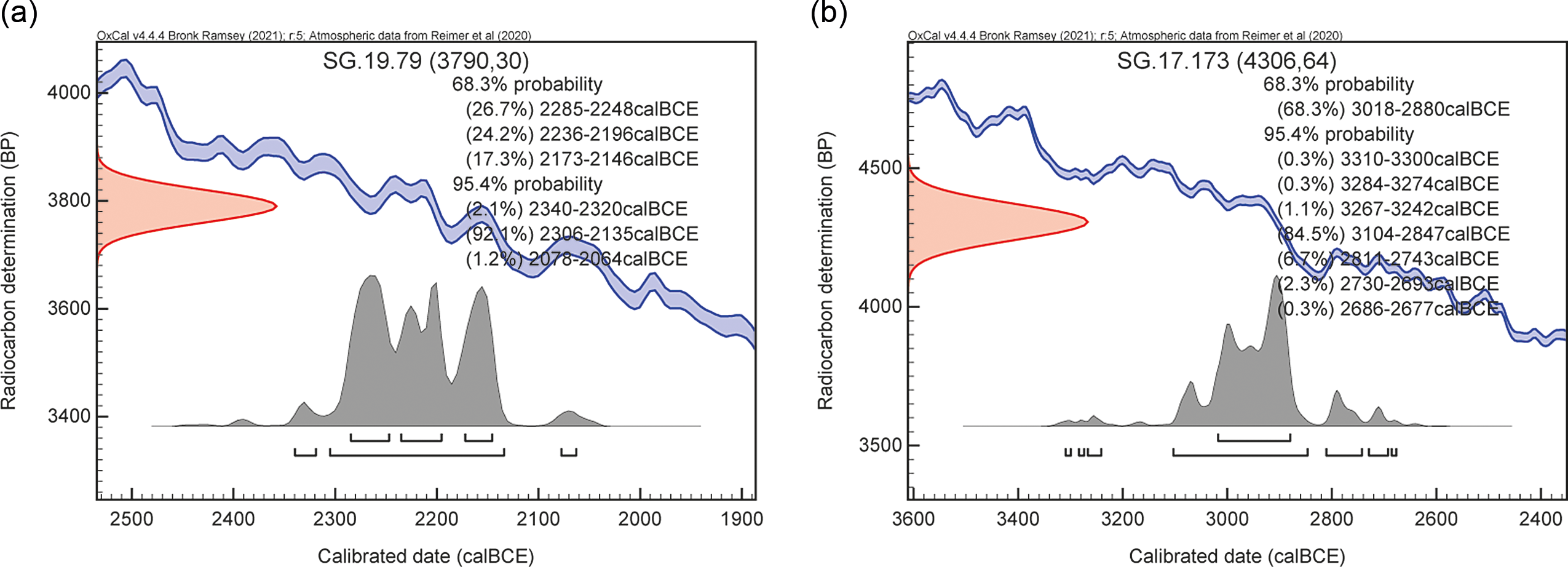
Fig. 24. a) C14 plot of sample SG.19.79 from SU 207, Arch. Ph. III; b) C14 plot of sample SG.17.173 from T.419 in Area A, which predates all Architectural Phases considered here (© MAIN)
At the moment, some incertitude appears in the pottery sequence in Mound A at Tell Zurghul/Nigin coinciding with Pottery Phase D (dated in historical chronology to the ED IIIA period). In fact, the pottery associated with the Arch. Ph. IV presents some traits that link the assemblage to the later Arch. Ph. III, with some differences that may be relevant to further subdividing the repertoires.
The last phase, Arch. Ph. V, has been identified in a sounding in the south-western corner of the trench. Another functional change in the organization of the area has been identified, with the identification of what seems to be a mudbrick structure composed of two small rooms. The ceramic repertoire is so far limited, but it is composed of types belonging to the first half of the third millennium B.C.E. and fits well with a late ED I/transition ED I–ED IIIA horizon. At Tell Zurghul/Nigin, early ED I levels have already been investigated in Area A at the bottom of Mound A.Footnote 167 The analysis of a carbon sample (SG.17.173; Fig. 24b) from the excavation of a sealed tannur (T.419) belonging to Area A Phase 5Footnote 168 gave an interesting result (3104–2847 calB.C.E.), which fits with the occupation of this area of the site and presumably the beginning of the use of the building in the very early centuries of the third millennium B.C.E., from the Jemdet Nasr to the early ED I period.Footnote 169 This radiocarbon dating from Area A is also a reliable terminus post quem for Arch. Ph. V. ED I levels were also investigated in the lower town of Tell Zurghul/Nigin, where a drone survey followed by operations of scraping in large quadrants (10 x 10 m) in Area F have shown the existence of a dense network of mud-brick walls forming small rooms aligned along streets, next to the inner canal of the city. The dating of these remains also points to the beginning of the third millennium B.C.E. and reveals that a large portion of the site was already extensively occupied during this time.
The pottery materials from Arch. Ph. V appear slightly later than those found in the Area A excavations and find more temporal comparisons with Fara DE 38/39, lev. 2. Additional comparisons with Area G at al-Hiba and Tell Asmar Abu Temple AS III suggest continuity with the oldest repertoires of the early third millennium B.C.E. Considering that Arch. Ph. V has been identified in Mound A at c. 8 m above the base of the mound, it seems reasonable to propose a parallel with the long occupational ED I sequence identified in Area G at al-Hiba, where 7 m of ED I archaeological deposits were recovered in a deep sounding.Footnote 170 These new data from Tell Zurghul/Nigin for an incipient urbanism at the very beginning of the third millennium B.C.E. lay the foundation for re-evaluating the importance of the entire Lagash region during this formative stage.
After the collapse of the ‘First Urbanisation’ of the Uruk period,Footnote 171 in the first half of the third millennium B.C.E., the territorial system established by and around the site of Warka/Uruk collapsed, with the consequent birth of new urban centres in the entire Mesopotamian alluvium.Footnote 172 However, while the processes of origin, development, and outcome of the first and second urbanisations have been widely investigated,Footnote 173 less attention has been given to shapes of cities and urban planning, especially in light of how cities have been designed and adapted according to diverse environmental conditions over the long-term. Moreover, given the paucity of data for ED I cities, the identification of some patterns, i.e., the importance of temples and the absence of any evidence for large secular buildings during this formative period, has been suggested,Footnote 174 while the general characteristics of the Mesopotamian city have been outlined based on data from ED III cities. New data from ongoing excavations at Tell Zurghul/Nigin and Tell al-Hiba/Lagash have the potential to shed light on the specific characteristics of the early third millennium B.C.E. cities, particularly on the progressive changes in the cities concerning the distribution of public areas, workshops, private sectors, and the organisation of the mobility and connection among different urban quarters.
The extent and relevance of Tell Zurghul/Nigin in ED I will be investigated in detail during future excavation campaigns. Regarding later developments, during the mid-late third millennium B.C.E., the rulers of the First and Second Dynasties of Lagash carried out significant building activities in the region, providing the city of Tell Zurghul/Nigin with several public buildings. Ur-Nanshe and Enmetena of the First Dynasty and Gudea of the Second Dynasty of Lagash, in particular, extensively documented the first building of the É-Sirara Temple, dedicated to the goddess Nanshe, as well as the construction of the giguna-mah of Nanshe and the reconstruction of the main É-Sirara Temple.Footnote 175 Cuneiform sources also refer to public works concerning the excavation of canals to be used for agricultural purposes (artificial irrigation of arable lands) as well as waterways linking the three cities of the State (the capital Girsu, Lagash, and Nigin).Footnote 176 Tell Zurghul/Nigin thus becomes the third most important centre in the State of Lagash. Its importance was widely documented and known through cuneiform sources; its history is now emerging through archaeology as well.
Acknowledgements
We wish to warmly thank Eloisa Casadei, Melania Zingarello and Steve Renette for their comments and suggestions during the preparation of this manuscript.

